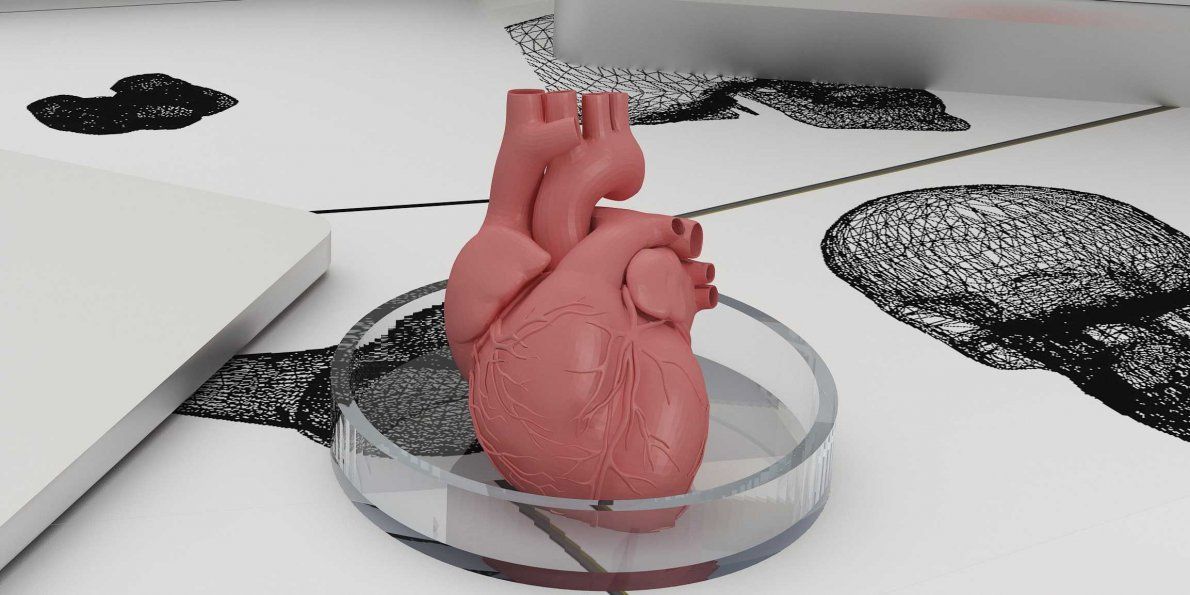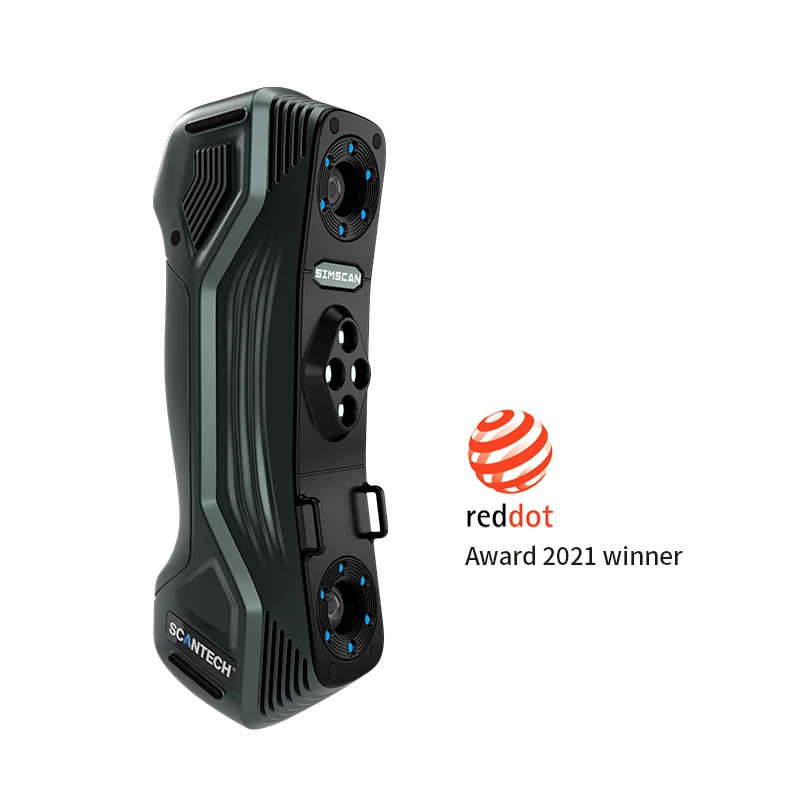Polymer 3d printers
3D Printing with Polymers: All You Need to Know in 2021
A deep dive into polymer 3D printing: technologies, promising developments, applications, and more.
As major chemical companies are now joining the 3D printing world and industry mainstays are further advancing the capabilities of the technology, polymer 3D printing is given a tremendous boost.
To keep up to the latest developments, below we’ll be diving into the most exciting innovations in polymer 3D printing and opportunities offered by the technology. But first, let’s explore the common polymer 3D printing techniques used across industries.
Contents
Polymer 3D Printing: The Technologies
Polymer 3D printers dominate the 3D printing hardware arena. They lead on all fronts: shipment revenues, the installed base, and the number of developments happening in this space.
Polymer 3D printing was predicted to have generated $11.7 billion in revenues in 2020, a figure that includes sales of hardware, materials and 3D-printed parts combined.
Below, we’re taking a look at the key technologies driving this growth.
[Image credit: AMPOWER]Vat Polymerisation
Stereolithography
The emergence of Stereolithography (SLA) in the 1980s marked the beginning of the 3D printing era. SLA is an ideal technology for producing great looking parts with an excellent surface finish. Due to its accuracy and high resolution, SLA parts are mostly used for form and fit concept models or as master patterns for moulding applications.
SLA relies on liquid photocurable resins. These are selectively cured by a UV laser layer by layer, causing the resin to solidify.
While SLA parts offer a great surface finish, they tend to be less durable than parts produced with other additive technologies. Also, since SLA materials are sensitive to UV light, their mechanical properties can change due to overexposure to sunlight, thus making them unsuitable for outdoor use.
SLA photopolymers come in a variety of colour options as well as several speciality materials (castable, durable, high-temperature, medical-grade).
The choice of materials for SLA is constantly expanding. Over the last 12 months, we’ve heard multiple announcements about new 3D printing resins from the likes of Formlabs, Henkel, Zortrax, DSM, and many more.
What can be distilled from the recent news is that 3D printing resin development has reached a new level: companies are extremely focused on advanced applications, particularly in the medical, dental and engineering fields.
Read also: 3D Printing for Digital Dentistry & Clear Aligner Manufacturing
Material Extrusion
FDM/FFF
Fused Deposition Modeling (FDM), as known as fused filament fabrication (FFF), is one of the most popular 3D printing methods for industrial uses. According to a market research firm, CONTEXT, the largest revenues from shipments came from this category of machines in 2020, reaching almost $150 million.
FDM became commercially available in the 1990s, serving as an affordable and user-friendly prototyping technology. Since then, FDM has evolved to offer greater reliability, accuracy and material choice, making it suitable for a number of production applications such as manufacturing aids.
Since then, FDM has evolved to offer greater reliability, accuracy and material choice, making it suitable for a number of production applications such as manufacturing aids.
Read also: 3D Printing for Aircraft Cabins
FDM uses thermoplastic filaments that are extruded through a nozzle onto the printing platform one layer at a time. One of the main limitations of FDM parts is anisotropy, meaning that their mechanical properties are not equal in all spatial dimensions. This can result in weaker parts.
Furthermore, FDM has a slower printing speed compared to other 3D technologies like SLS or SLA, making it generally impractical for series production.
Today, manufacturers have a variety of FDM filaments at their disposal, from elastic TPU to durable and reinforced ABS and high-performance materials like PEEK. With the availability of production-grade thermoplastics, FDM is ideal for producing functional, durable products.
Powder Bed FusionSelective Laser Sintering
Selective Laser Sintering (SLS) is an additive manufacturing process that involves the fusing of plastic powdered material using a powerful laser. With a combination of high accuracy, speed, reliability and lack of support structures, SLS is used both for functional prototyping and low-volume production.
With a combination of high accuracy, speed, reliability and lack of support structures, SLS is used both for functional prototyping and low-volume production.
SLS typically uses polyamide (nylon) powders, with PA11 and PA12 being the two most commonly used polyamides, in addition to flexible TPU material.
However, companies are continually adding new material offerings. For example, in 2018, Evonik released the world’s first flexible plastic PEBA-based (polyether block amide) powder for SLS.
German 3D printer manufacturer EOS has also made available carbon-fibre reinforced PEKK thermoplastic for its SLS systems, in addition to its certified PEEK material. The new PEKK thermoplastic is said to be able to replace aluminium parts in aerospace and industrial applications.
Notably, EOS is currently the only manufacturer that offers an SLS system capable of processing high-performance thermoplastics like PEEK and PEKK – the EOS P800.
Historically, SLS technology has been more expensive for companies to acquire (costing into the hundreds of thousands of dollars).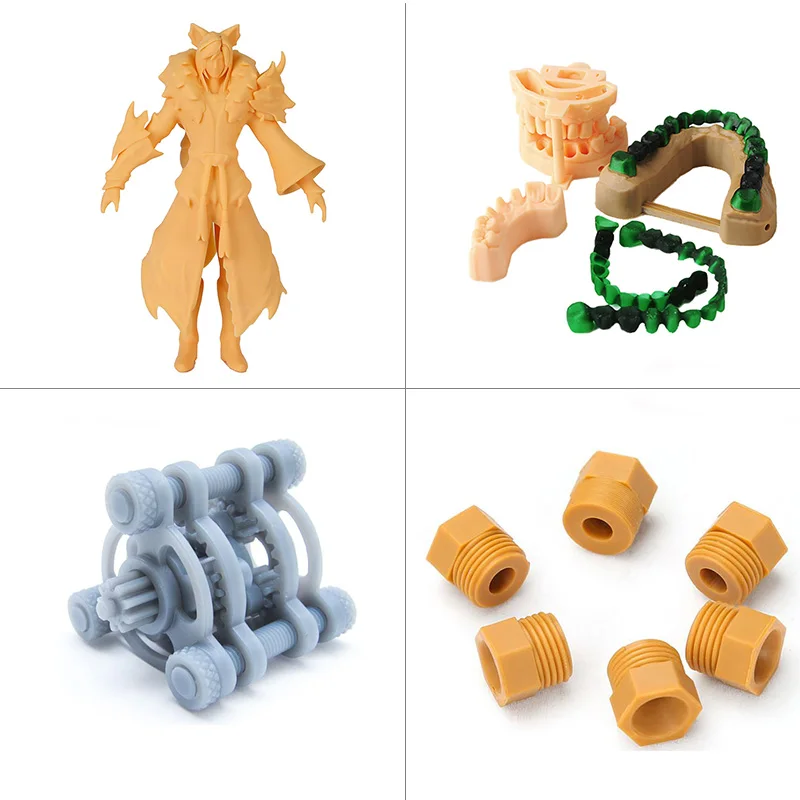 However, in 2014, the patent for the technology expired, giving rise to more affordable alternatives, such as the Formlabs Fuse 1 benchtop 3D printer.
However, in 2014, the patent for the technology expired, giving rise to more affordable alternatives, such as the Formlabs Fuse 1 benchtop 3D printer.
Since its introduction to the market in 2016, HP’s Multi Jet Fusion (MJF) has opened a new dimension for the production of industrial-grade functional parts and prototypes.
Like SLS, the technology uses nylon powders. However, instead of using lasers, MJF operates by dropping a fusing agent on each layer of powder, which is then fused by an infrared light source.
Compared to SLS, MJF offers a faster workflow due to HP’s innovative post-processing station, which speeds up the cooling process and aids in powder removal. The Jet Fusion 300/500 series also offers full-colour 3D printing capabilities.
There are a few limitations with HP’s Multi Jet Fusion, for example, its currently limited material selection (PA11, PA12, PA12 filled with glass beads).
However, HP promotes an Open Platform model, which encourages collaboration with material developers.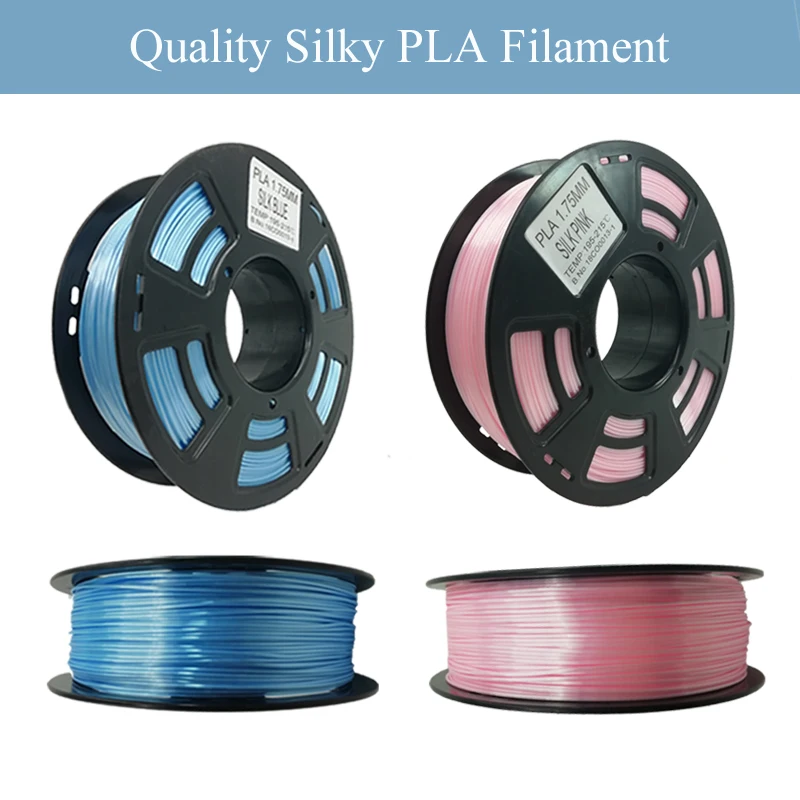 Through this approach, HP has partnered with over 50 companies, including Evonik, BASF and Lubrizol, which are working on the development of new materials suitable for the technology.
Through this approach, HP has partnered with over 50 companies, including Evonik, BASF and Lubrizol, which are working on the development of new materials suitable for the technology.
Read also:
–The Evolution of HP’s 3D Printing Technology: From Polymer to Metal AM
–AMFG and HP compatibility drives AM system connectivity
Material JettingMaterial Jetting is an inkjet printing process that involves depositing a liquid photoreactive material onto a build platform layer by layer. Similarly to SLA, Material Jetting uses resins, which solidify under a UV light.
One of the key benefits of Material Jetting is the ability to combine two or more photopolymers during the printing process, resulting in a part with hybrid properties (e.g. combining rigidity with flexibility). Furthermore, the technology is capable of producing full-colour parts, which makes it ideal for prototypes with a final-product look.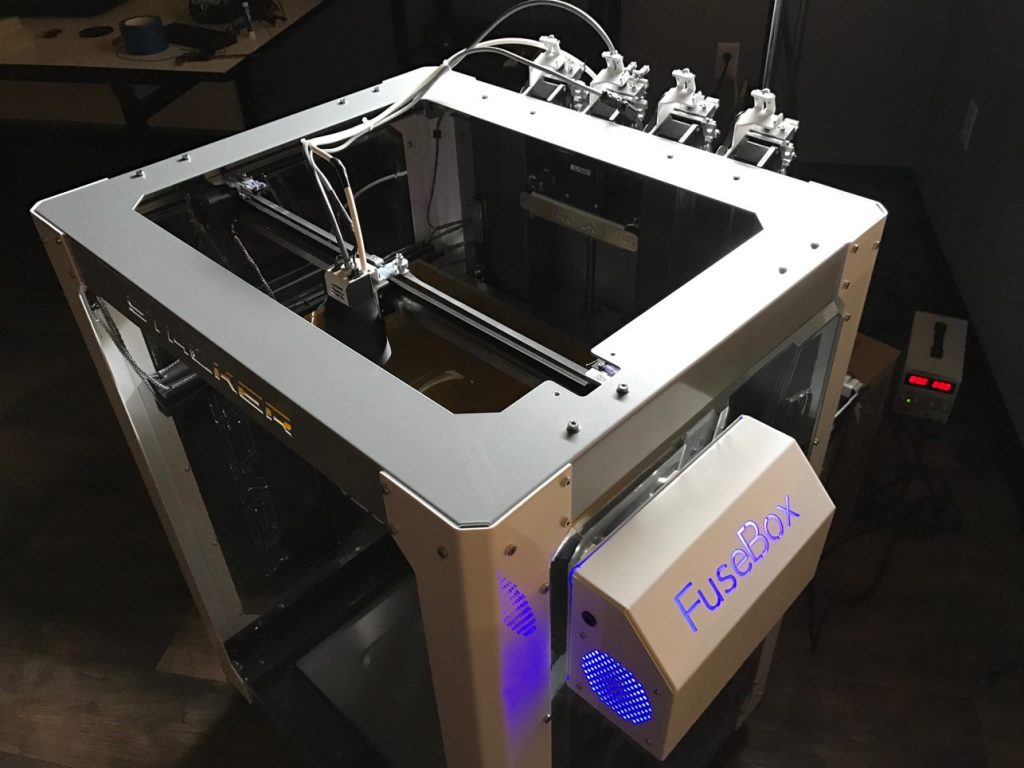
Resins used in Material Jetting are similar to those used in SLA, but have a less viscous, ink-like form. Their cost is also typically higher.
Among the limitations of the technology is the poor mechanical properties of the printed parts, which make material jetted parts generally unsuitable for functional applications.
Polymer 3D Printing: The Opportunities and Applications
Industrial 3D printing with polymer materials unlocks a wide array of possibilities both for production and product development departments. Below, we’ve outlined the most prominent of them.
Rapid prototyping
Prototyping remains one of the primary application areas for polymer 3D printing. With the evolution of 3D printing technologies, prototypes can now be produced much faster, they are more durable and visually appealing.
The automotive industry, which is said to have purchased the greatest number of printers in 2017, is a prominent user of polymer 3D printing for prototyping purposes.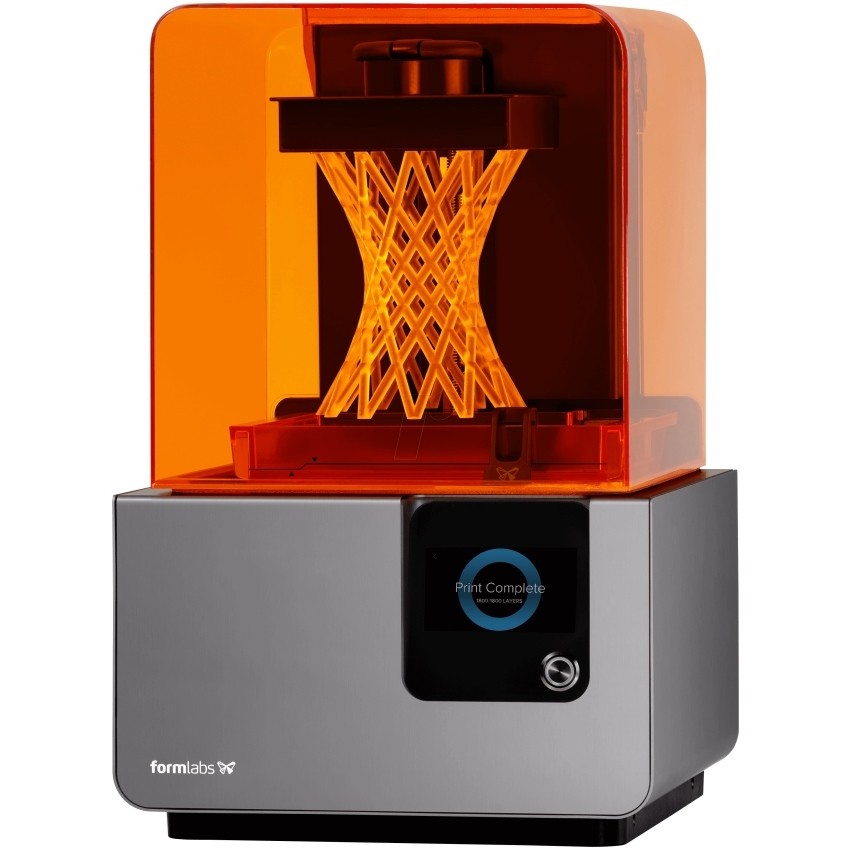 Here, all kinds of 3D printing technologies are leveraged both for form and fit, as well as functional, testing and validation.
Here, all kinds of 3D printing technologies are leveraged both for form and fit, as well as functional, testing and validation.
One example is Audi, which is using Stratasys’ J750 PolyJet 3D printer to design and validate parts, such as taillight covers, for its automobiles.
As a full-colour, multi-material process, Stratasys Polyjet 3D printing allows building physical prototypes with the final product look, thus considerably simplifying and accelerating the product development process.
Tail light cover 3D-printed prototypes [Image credit: Audi]
In the motorsports sector, 3D printing is a go-to technology when it comes to producing functional parts for race car testing. The Alfa Romeo Sauber F1 Team, for example, extensively uses SLS and SLA 3D printing to produce parts including front wings, brake ducts and suspension covers, as well as engine covers, internal ducts and hand deflectors for wind-tunnel car models.
More efficient tooling
3D printing for tooling has emerged as one of the most promising uses of the technology.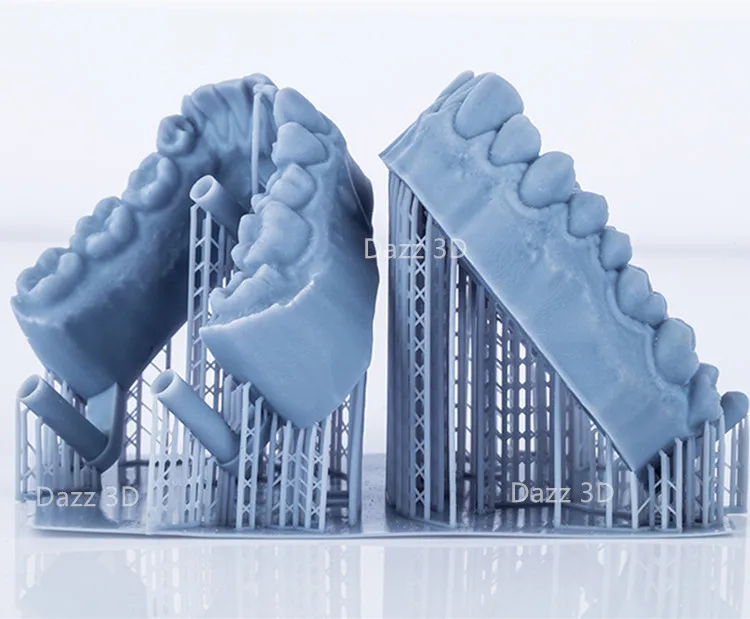 From jigs and fixtures to investment casting patterns, polymer 3D printing opens the door to faster, cheaper and customised tools.
From jigs and fixtures to investment casting patterns, polymer 3D printing opens the door to faster, cheaper and customised tools.
Generally, companies turn to FDM and SLA technologies to produce tooling due to their relative affordability and ease of use.
Car manufacturer Ford is reported to be using Ultimaker FDM 3D printers to create custom tools.
The benefits go beyond affordability, too. According to Ford’s Technical Leader, Harold Sears, 3D printing is “helping people do their jobs by making tools that are more ergonomically correct for operators. This is perhaps a soft benefit but one that is certainly helpful if operators are happier and more comfortable doing their job. They’ll also do a better job which only improves quality.”
Additionally, at times the available 3D printable thermoplastic materials currently available are even strong enough to replace metal tools, which makes the assembly process a lot easier and lowers the cost of the custom tool.
Medical applications
The medical industry was one of the early adopters of polymer 3D printing. Today, the technology has found a number of uses in the sector, from 3D printed surgical guides and tools to replicas of human organs for pre-surgical planning.
Increasingly, 3D printing is being used to directly produce custom medical devices, including low-cost prosthetics and dental devices such as aliners and bridges.
One of the sectors of the industry that has been completely transformed by 3D printing is hearing aids. Today, more than 90% of hearing aids are manufactured worldwide using SLA 3D printing technology.
Since the outbreak of the pandemic, polymer 3D printing has also established itself as a viable technology for the production of ventilator valves, safety goggles, protective face shields and testing swabs.
Read also: 3D Printing In Healthcare: Where Are We In 2021?
Customised consumer products
Consumer goods companies are increasingly eyeing plastic 3D printing as an option for mass customisation.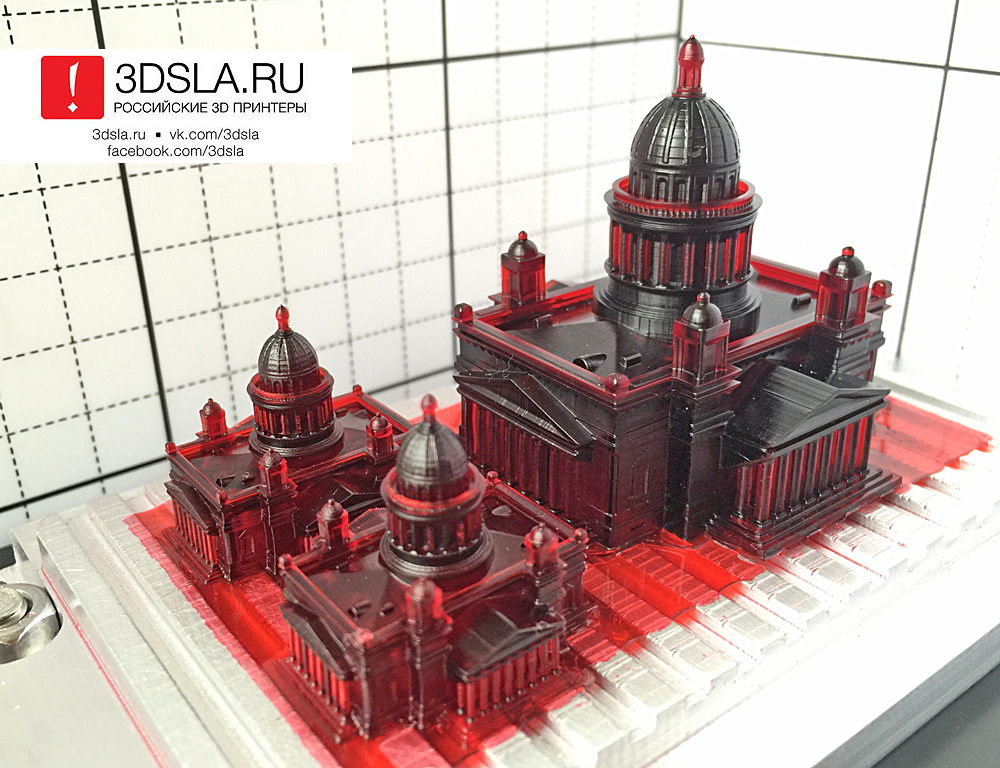 Since 3D printing doesn’t require labour-intensive and costly tooling and can create complex objects cost-effectively, it enables the production of personalised products tailored to consumers.
Since 3D printing doesn’t require labour-intensive and costly tooling and can create complex objects cost-effectively, it enables the production of personalised products tailored to consumers.
One brand exploring 3D printing is Dr. Scholl‘s, the provider of foot care products. It has partnered with technology company Wiivv to make custom 3D printed inserts.
Using Wiivv Fit Technology, Dr Scholl’s offers a customisation app, which maps out 400 points on each user’s feet with a few phone photos. Though this process, which takes less than five minutes, inserts can be designed and then printed to the exact specifications of customers‘ feet.
Read also:
• 3D Printing for Footwear
• 5 Ways 3D Printing Can Benefit the Consumer Goods Industry
Exciting Technological Developments in Polymer 3D Printing
The 3D printing industry is making leaps in developing new polymer 3D printing technologies and improving existing ones. Below, we’ve outlined the recent most significant technological developments in the field of polymer 3D printing.
Below, we’ve outlined the recent most significant technological developments in the field of polymer 3D printing.
EOS’s new LaserProFusion technology
Announced at Formnext 2018, the LaserProFusion technology from EOS is an innovative polymer 3D printing technology being developed to enable serial additive production. The process relies on up to one million diode lasers that can reach up to 5kW power output to print plastic materials.
EOS’s LaserProFusion technology will be equipped with up toa million of diode lasers to enable faster SLS 3D printing [Image credit: EOS]
With this technology, the manufacturing process is said to be ten times faster, thus achieving the same level of productivity as injection moulding.
Although it’s unclear when the system becomes commercially available, the announcement is yet another indicator of the industrialisation of 3D printing technologies.
High-speed photopolymerisation
[Image credit: Carbon]
Photopolymerisation, which includes the SLA and DLP processes, has evolved significantly over the last several years.
This technology has been forging ahead as a mass manufacturing process and the recent introduction of high-speed photopolymerisation has only accelerated this trend.
Almost all major players in this field have introduced systems capable of printing functional resin parts close to injection moulding volumes.
In 2014, Carbon introduced its high-speed Digital Light Synthesis technology, which evolved into a M2 3D printer capable of printing at the speed of 20 cm/hour.
Read also: Carbon’s Co-Founder Philip DeSimone on Moving Towards High-Volume Production with 3D Printing
In 2016, 3D Systems unveiled its take on high-speed, automated SLA – the Figure 4 system. Recent data highlight Figure 4 Production part print speeds up to 65 mm/hour, and prototyping speeds of up to 100 mm/hour.
Other companies followed, with the likes of EnvisionTEC (acquired by Desktop Metal), Nexa3D, Origin (acquired by Stratasys) and NewPro.
Process speed in 3D printing has long been one of its weakest sides.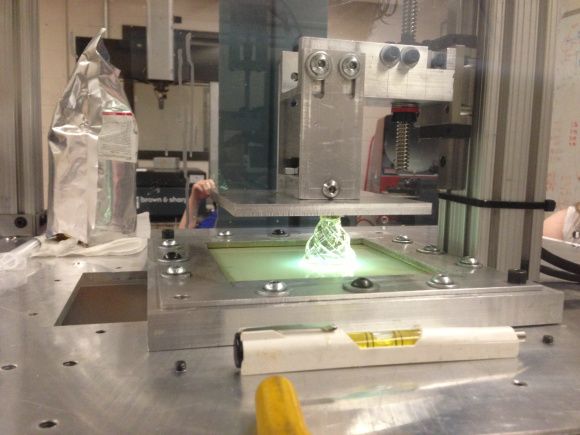 This, particularly, is an obstacle for adoption in industries driven by mass serial production, such as automotive and consumer goods. In these industries, products need to be manufactured and delivered in as short a timeframe as possible, in order to maintain production efficiency.
This, particularly, is an obstacle for adoption in industries driven by mass serial production, such as automotive and consumer goods. In these industries, products need to be manufactured and delivered in as short a timeframe as possible, in order to maintain production efficiency.
Now, with the advancements in high-speed polymerisation, there is a viable option for manufacturers wanting to 3D print parts at higher volumes.
Rize’s Augmented Polymer Deposition (APD) technology
Eliminating post-processing has been a long-held dream in the 3D printing industry – and Rize’s technology promises to remove the post-processing pain points. The US-based 3D printer manufacturer has developed its hybrid Augmented Polymer Deposition (APD) technology, which combines material extrusion with ink-jetting.
This combination enables the printing of support structures that can be easily removed by hand once the printing process is finished, and without the need for any further post-processing operations.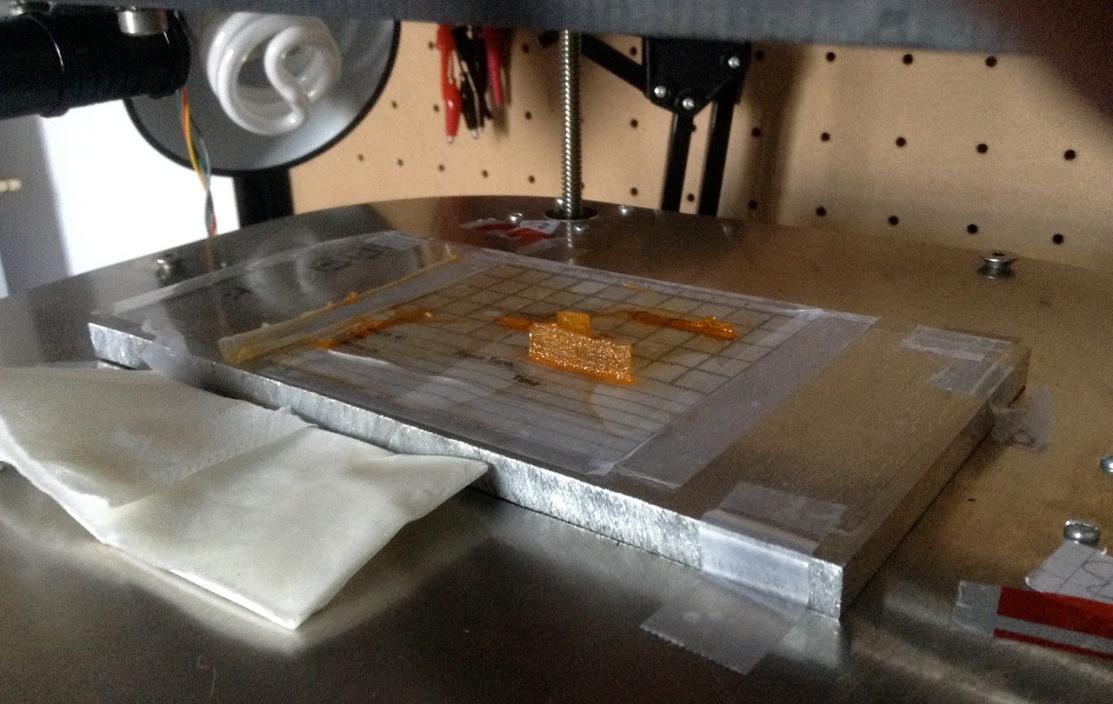
APD technology has been used to make isotropic, full-colour, industrial-strength parts for prototyping, tooling and production applications.
Last year, the company also introduced a new feature, whereby users can 3D print secure information, like a QR or barcode, on a part with the help of the technology. This would allow, for example, an engineer to digitally store all of the information for a specific part, maintaining a digital inventory.
BigRep’s large-scale FDM 3D printing
One of the major barriers to the wider adoption of FDM for industrial applications is the size of the build envelope. This is a barrier the German company BigRep is repeatedly attempting to overcome with its incredibly large and highly capable line of 3D printers.
At formnext 2018, BigRep unveiled two next-generation 3D printers – the BigRep PRO (1005 x 1005 x 1005 mm) and BigRep EDGE ( 1500 x 800 x 600 mm) — geared towards industrial use.
Both systems are equipped with proprietary Metering Extruder Technology (MXT), which sets them apart from other large-scale options. This new extruder technology provides a clear separation between filament feeding, melting and extrusion, thus enabling faster printing speeds with greater precision and quality. For example, the BigRep PRO is said to offer five times the filament throughput rate and three times the average extrusion rate, compared to other FDM machines available on the market.
This new extruder technology provides a clear separation between filament feeding, melting and extrusion, thus enabling faster printing speeds with greater precision and quality. For example, the BigRep PRO is said to offer five times the filament throughput rate and three times the average extrusion rate, compared to other FDM machines available on the market.
The MXT is optimised to work with professional-grade materials like ASA/ABS and nylon that BigRep is producing in collaboration with the German chemical company BASF.
Notably, the BigRep PRO incorporates state-of-art CNC control systems and drives by Bosch Rexroth, enabling IoT and data processing capabilities. This will ultimately help accelerate the printer’s integration into the Industry 4.0 vision.
More on this: 4 Impressive Applications of Large-Scale 3D Printing
Evolve’s STEP technology
More and more 3D printer manufacturers are setting their eyes on mass production, and Stratasys spin-off Evolve Additive Solutions is no different.
After almost a decade of development, the company unveiled its new production-speed “STEP” (short for Selective Toner Electrophotographic Process) technology for polymers last year.
Evolve’s STEP process offers a novel approach to volume production with additive manufacturing, not least because it is said to be 50 times faster than the fastest 3D printing technologies available.
What’s more, the company claims that the technology is capable of producing parts with quality comparable to those made with conventional methods, and not just in terms of aesthetic finish, but also strength. Additionally, STEP technology provides multi-material and full-colour printing capabilities.
Although Evolve is still two years away from commercialisation, their technology will be one to keep an eye on.
Stratasys’ SAF
The 3D printing industry mainstay, Stratasys, also continues to increase its presence in the rapidly expanding area of production-grade 3D printing systems. The company just presented the upcoming line of powder bed fusion (PBF) based 3D printers.
The company just presented the upcoming line of powder bed fusion (PBF) based 3D printers.
The new H Series Production Platform will be powered by Selective Absorption Fusion (SAF) technology specifically designed to meet the needs of volume manufacturing.
SAF is a powder-based 3D printing process. However, while SLS uses a laser to selectively fuse polymer particles, SAF does something entirely different.
SAF uses a counter-rotating roller to coat powder layers onto a print bed and then printheads selectively drop absorber fluid to form the part’s layer. The imaged layer is fused by passing an IR lamp over the entire span of the print bed, causing the selected regions to fuse.
What’s good about this new process is that it will reportedly offer high printing speed and scalability. Commercial availability of 3D printers based on SAF technology is currently expected in the third quarter of 2021.
If Stratasys’ SAF delivers on its vision, it could become a viable alternative to the established SLS and Multi Jet Fusion processes.
Polymer 3D printing market consolidation
The additive manufacturing industry has seen a spate of acquisitions and mergers over the last six months, many of which were in the polymer AM sector.
While M&A activity is nothing new in the AM space, recent announcements have something significant in common: production focus.
Here are some highlights of the recent M&A moves in polymer 3D printing:
- In September 2020, Covestro announced the intent to acquire the DSM Resins & Functional Materials line of business, including DSM Additive Manufacturing.
- In December 2020, Stratasys announced the acquisition of Origin.
- In January 2021, Desktop Metal announced the intent to acquire EnvisionTEC.
It’s encouraging to see companies coming together to strengthen their offerings and present compelling solutions for industrial AM production.
This desire to expand process and materials portfolios to include more options from a single parent source operating through a single distribution network will enable a lot more customer requests to be met.
Doing so on a large scale, with a focus on repeatability and reliability, is a major step forward for polymer 3D printing.
Using plastic instead of metal
Weight reduction is a particular goal for some industries like aerospace and motorsports. Making an aircraft or a vehicle lighter helps reduce fuel consumption and optimise a vehicle’s performance.
While these industries generally rely on metal lightweighting solutions to reduce weight, the recent advancements in polymer 3D printing materials offer some exciting opportunities. The ability to 3D print high-performance thermoplastics like carbon-fibre, ULTEM and PEEK can mean metals can be replaced with plastics in some applications.
According to one analysis, replacing aluminium aircraft brackets with PEEK alternatives can result in a 5% to 9% weight reduction, which can have a tremendous bottom-line impact on the fuel consumption of an aircraft.
Replacing a metal part with 3D-printed plastic can also be beneficial for speeding up the maintenance process. One service bureau has used Stratasys FDM Nylon 12CF carbon-filled thermoplastic to make a replacement for a metal machine part. 3D printing the spare part resulted in a superior component, produced much faster than its conventionally manufactured counterpart.
Read also: Composite 3D Printing: An Emerging Technology with a Bright Future
Things to consider when adopting polymer 3D printing in-house
Sustainability
Recycling and reuse of polymer 3D printing materials is an important factor to consider when adopting polymer AM in-house.
In filament-based 3D printing, recycling is commonplace, with many companies producing plastic filaments from recycled plastic.
However, while thermoplastics, like filament, can be easy to recycle by just remelting them, thermoset plastics cannot be remelted, which means they are unable to be recycled.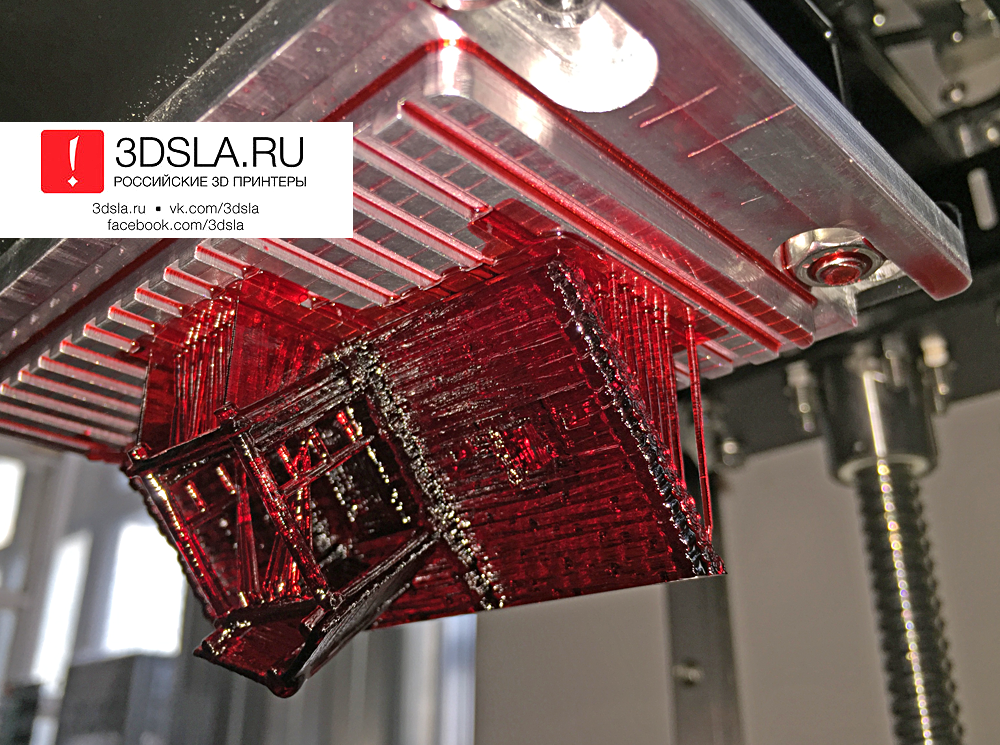
In powder-based polymer 3D printing, powder reuse is also not entirely straightforward. In most cases, you’ll need to mix ‘used-but-unfused’ powder with about 50% virgin powder, in order for it to be reused. For some high-performance powders like PEEK, the refresh rate is drastically reduced and, in some cases, none of the excess powder can be reused.
So how can you print sustainably with polymer 3D printing materials? One way is by minimising waste through better designs. Additionally, make sure to contact your local waste or recycling centre to see if they have the capacity to dispose of 3D-printed polymers safely.
More on this: How Sustainable is Industrial 3D Printing?
Post-processing
Removal processes, such as support removal, resin or powder removal, are the most commonly employed post-processing operations in polymer 3D printing. They are typically performed manually, which takes up a lot of time and labour resources.
Further complicating this stage is the fact that you may want to use several 3D printing technologies, each with its own post-processing requirements.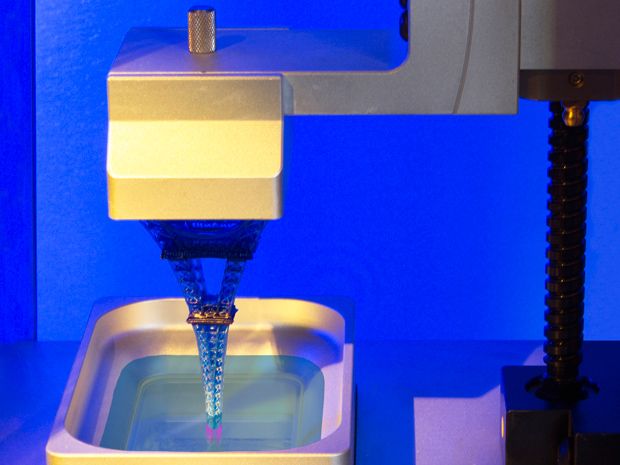
To improve post-processing operations, companies, like Rösler, PostProcess Technologies, AMT and DyeMansion, have been developing solutions to help AM users streamline post-processing.
Currently, the biggest trend is on creating end-to-end post-processing solutions, covering sorting, material removal and de-powdering, smoothing and dyeing, and inspection.
When adopting polymer 3D printing, understanding the post-processing requirements is imperative. Unoptimised post-processing can add a lot of cost to 3D printing operations, which can and should be avoided through automation.
Workflow management
Adopting polymer 3D printing in-house will also require you to consider approaches to managing operations, such as order management, cost calculation, production scheduling, inventory management, etc.
Many companies today either rely on solutions initially developed for traditional manufacturing or develop their software internally. Each approach often leads to siloed workflow, which lacks visibility and can’t be easily scaled.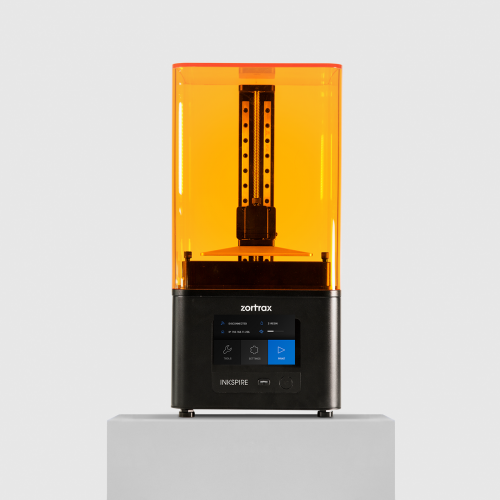
Not to fall into the trap of an inefficient, unscalable workflow, a good practice is to implement workflow management and manufacturing execution solutions that have been developed with 3D printing requirements in mind.
Several options are available on the market today but only a few offer end-to-end solutions that cover the entire 3D printing workflow.
To learn more about such solutions, discover our whitepaper “Additive Manufacturing MES Software: The Essential Guide”
The future of polymer 3D printing
From realistic concept models to sturdy prototypes, ergonomic tools and functional end-use parts, the opportunities created by polymer 3D printing are immense.
Although some challenges remain to be overcome, such as expanding the material selection and ensuring the reduction of material costs, ongoing developments in polymer 3D printing will help companies further reap the benefits of the technology.
As the AM industry as a whole, and polymer 3D printing in particular, moves toward the production of end parts, we see 3D printable composites and high-performance thermoplastics gaining greater traction.
While polymer 3D printing won’t replace conventional processes, the technology will certainly enhance current manufacturing capabilities, further unlocking advanced industrial applications.
Looking for more insight on polymer 3D printing? Check out the articles below:
Stereolithography & Digital Light Processing: Where Are We Today?
FDM 3D Printing: Where Are We Today?
The Evolution of SLS: New Technologies, Materials and Applications
Types of 3D Printers, Materials, and Applications
Skip to Main Content
3D printing or additive manufacturing (AM) technologies create three-dimensional parts from computer-aided design (CAD) models by successively adding material layer by layer until physical part is created.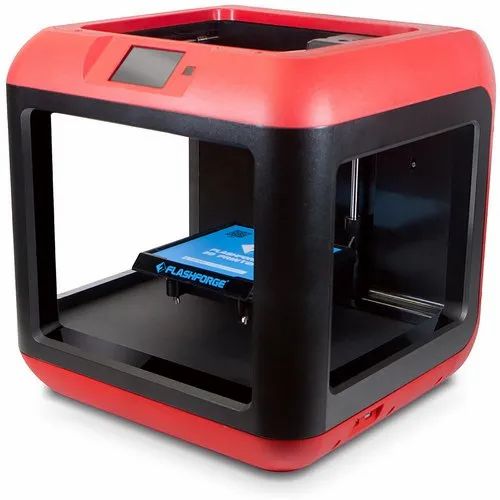
While 3D printing technologies have been around since the 1980s, recent advances in machinery, materials, and software have made 3D printing accessible to a wider range of businesses, enabling more and more companies to use tools previously limited to a few high-tech industries.
Today, professional, low-cost desktop and benchtop 3D printers accelerate innovation and support businesses in various industries including engineering, manufacturing, dentistry, healthcare, education, entertainment, jewelry, and audiology.
All 3D printing processes start with a CAD model that is sent to software to prepare the design. Depending on the technology, the 3D printer might produce the part layer by layer by solidifying resin or sintering powder. The parts are then removed from the printer and post-processed for the specific application.
See how to go from design to 3D print with the Form 3 SLA 3D printer. This 5-minute video covers the basics of how to use the Form 3, from the software and materials to printing and post-processing.
3D printers create parts from three-dimensional models, the mathematical representations of any three-dimensional surface created using computer-aided design (CAD) software or developed from 3D scan data. The design is then exported as an STL or OBJ file readable by print preparation software.
3D printers include software to specify print settings and slice the digital model into layers that represent horizontal cross-sections of the part. Adjustable printing settings include orientation, support structures (if needed), layer height, and material. Once setup is complete, the software sends the instructions to the printer via a wireless or cable connection.
Some 3D printers use a laser to cure liquid resin into hardened plastic, others fuse small particles of polymer powder at high temperatures to build parts. Most 3D printers can run unattended until the print is complete, and modern systems automatically refill the material required for the parts from cartridges.
With Formlabs 3D printers, an online Dashboard allows you to remotely manage printers, materials, and teams.
Depending on the technology and the material, the printed parts may require rinsing in isopropyl alcohol (IPA) to remove any uncured resin from their surface, post-curing to stabilize mechanical properties, manual work to remove support structures, or cleaning with compressed air or a media blaster to remove excess powder. Some of these processes can be automated with accessories.
3D printed parts can be used directly or post-processed for specific applications and the required finish by machining, priming, painting, fastening or joining. Often, 3D printing also serves as an intermediate step alongside conventional manufacturing methods, such as positives for investment casting jewelry and dental appliances, or molds for custom parts.
The three most established types of 3D printers for plastics parts are stereolithography (SLA), selective laser sintering (SLS), and fused deposition modeling (FDM).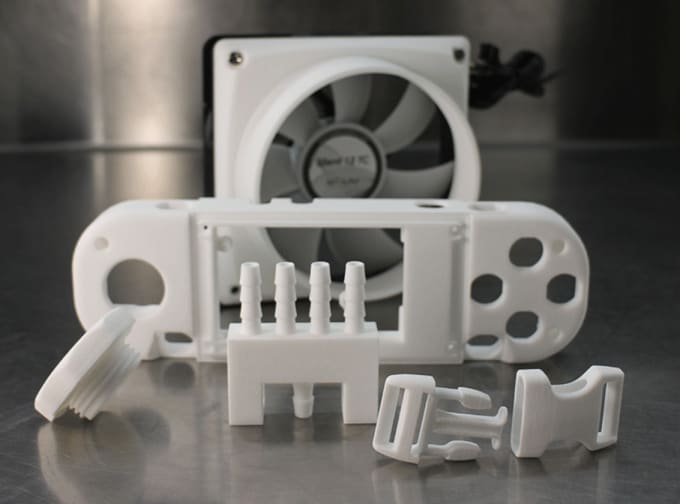 Formlabs offers two professional 3D printing technologies, SLA and SLS, bringing these powerful and accessible industrial fabrication tools into the creative hands of professionals around the world.
Formlabs offers two professional 3D printing technologies, SLA and SLS, bringing these powerful and accessible industrial fabrication tools into the creative hands of professionals around the world.
Stereolithography was the world’s first 3D printing technology, invented in the 1980s, and is still one of the most popular technologies for professionals. SLA 3D printers use a laser to cure liquid resin into hardened plastic in a process called photopolymerization.
SLA resin 3D printers have become vastly popular for their ability to produce high-accuracy, isotropic, and watertight prototypes and parts in a range of advanced materials with fine features and smooth surface finish. SLA resin formulations offer a wide range of optical, mechanical, and thermal properties to match those of standard, engineering, and industrial thermoplastics.
Resin 3D printing a great option for highly detailed prototypes requiring tight tolerances and smooth surfaces, such as molds, patterns, and functional parts. SLA 3D printers are widely used in a range of industries from engineering and product design to manufacturing, dentistry, jewelry, model making, and education.
SLA 3D printers are widely used in a range of industries from engineering and product design to manufacturing, dentistry, jewelry, model making, and education.
- Rapid prototyping
- Functional prototyping
- Concept modeling
- Short-run production
- Dental applications
- Jewelry prototyping and casting
Learn More About SLA 3D Printers
Stereolithography (SLA) 3D printing uses a laser to cure liquid photopolymer resin into solid isotropic parts.
SLA parts have sharp edges, a smooth surface finish, and minimal visible layer lines.
Selective laser sintering (SLS) 3D printers use a high-power laser to sinter small particles of polymer powder into a solid structure. The unfused powder supports the part during printing and eliminates the need for dedicated support structures. This makes SLS ideal for complex geometries, including interior features, undercuts, thin walls, and negative features.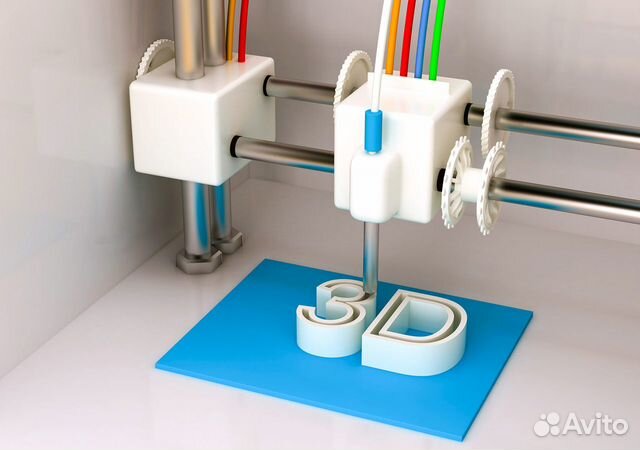 Parts produced with SLS printing have excellent mechanical characteristics, with strength resembling that of injection-molded parts.
Parts produced with SLS printing have excellent mechanical characteristics, with strength resembling that of injection-molded parts.
The most common material for selective laser sintering is nylon, a popular engineering thermoplastic with excellent mechanical properties. Nylon is lightweight, strong, and flexible, as well as stable against impact, chemicals, heat, UV light, water, and dirt.
The combination of low cost per part, high productivity, and established materials make SLS a popular choice among engineers for functional prototyping, and a cost-effective alternative to injection molding for limited-run or bridge manufacturing.
- Functional prototyping
- End-use parts
- Short-run, bridge, or custom manufacturing
Learn More About SLS 3D Printers
SLS 3D printers use a high-powered laser to fuse small particles of polymer powder.
SLS parts have a slightly rough surface finish, but almost no visible layer lines.
Fused deposition modeling (FDM), also known as fused filament fabrication (FFF), is the most widely used type of 3D printing at the consumer level. FDM 3D printers work by extruding thermoplastic filaments, such as ABS (Acrylonitrile Butadiene Styrene), PLA (Polylactic Acid), through a heated nozzle, melting the material and applying the plastic layer by layer to a build platform. Each layer is laid down one at a time until the part is complete.
FDM 3D printers are well-suited for basic proof-of-concept models, as well as quick and low-cost prototyping of simple parts, such as parts that might typically be machined. However, FDM has the lowest resolution and accuracy when compared to SLA or SLS and is not the best option for printing complex designs or parts with intricate features. Higher-quality finishes may be obtained through chemical and mechanical polishing processes. Industrial FDM 3D printers use soluble supports to mitigate some of these issues and offer a wider range of engineering thermoplastics, but they also come at a steep price.
- Basic proof-of-concept models
- Simple prototyping
Learn More About FDM 3D Printers
FDM 3D printers build parts by melting and extruding thermoplastic filament, which a printer nozzle deposits layer by layer in the build area.
FDM parts tend to have visible layer lines and might show inaccuracies around complex features.
Having trouble finding the best 3D printing process for your needs? In this video guide, we compare FDM, SLA, and SLS technologies, the most popular types of 3D printers, across the most important buying considerations.
Each 3D printing process has its own benefits and limitations that make them more suitable for certain applications. This video compares the functional and visual characteristics of FDM, SLA, and SLS printers 3D printers to help you identify the solution that best matches your requirements.
Do you need custom parts or prototypes fast? Compared to outsourcing to service providers or using traditional tools like machining, having a 3D printer in-house can save weeks of lead time.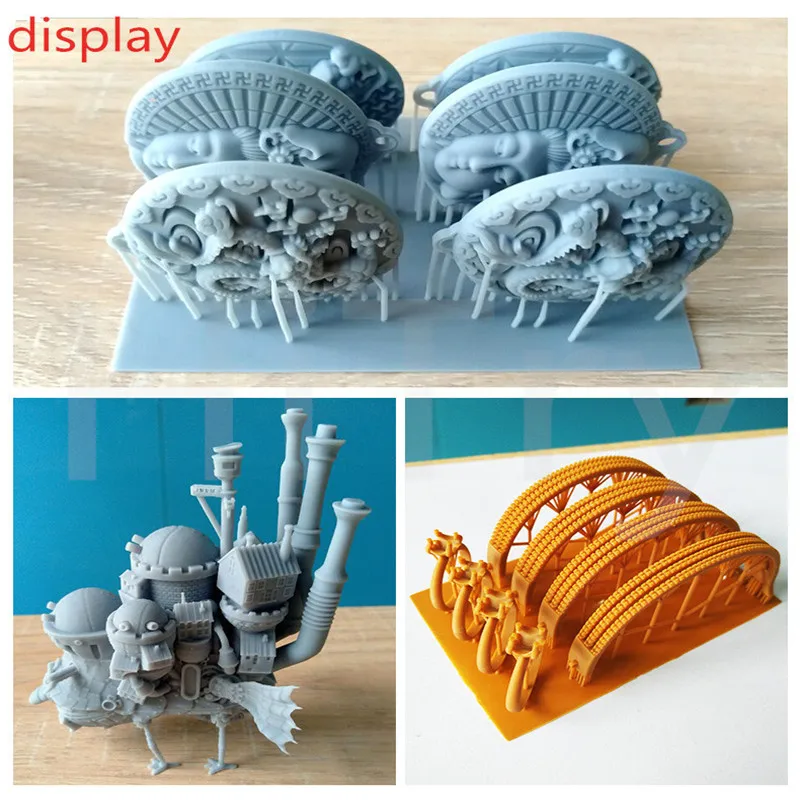 In this video, we compare the speed of FDM, SLA, and SLS 3D printing processes.
In this video, we compare the speed of FDM, SLA, and SLS 3D printing processes.
Comparing the cost of different 3D printers goes beyond sticker prices—these won’t tell you the full story of how much a 3D printed part will cost. Learn the three factors you need to consider for cost and how they compare across FDM, SLA, and SLS 3D printing technologies.
As additive manufacturing processes build objects by adding material layer by layer, they offer a unique set of advantages over traditional subtractive and formative manufacturing processes.
With traditional manufacturing processes, it can take weeks or months to receive a part. 3D printing turns CAD models into physical parts within a few hours, producing parts and assemblies from one-off concept models to functional prototypes and even small production runs for testing. This allows designers and engineers to develop ideas faster, and helps companies to bring products more quickly to the market.
Engineers at the AMRC turned to 3D printing to rapidly produce 500 high-precision drilling caps used in drilling trials for Airbus, cutting the lead time from weeks to only three days.
With 3D printing, there’s no need for the costly tooling and setup associated with injection molding or machining; the same equipment can be used from prototyping to production to create parts with different geometries. As 3D printing becomes increasingly capable of producing functional end-use parts, it can complement or replace traditional manufacturing methods for a growing range of applications in low- to mid-volumes.
Pankl Racing Systems substituted machined jigs and fixtures with 3D printed parts, decreasing costs by 80-90 percent that resulted in $150,000 in savings.
From shoes to clothes and bicycles, we’re surrounded by products made in limited, uniform sizes as businesses strive to standardize products to make them economical to manufacture. With 3D printing, only the digital design needs to be changed to tailor each product to the customer without additional tooling costs. This transformation first started to gain a foothold in industries where custom fit is essential, such medicine and dentistry, but as 3D printing becomes more affordable, it’s increasingly being used to mass customize consumer products.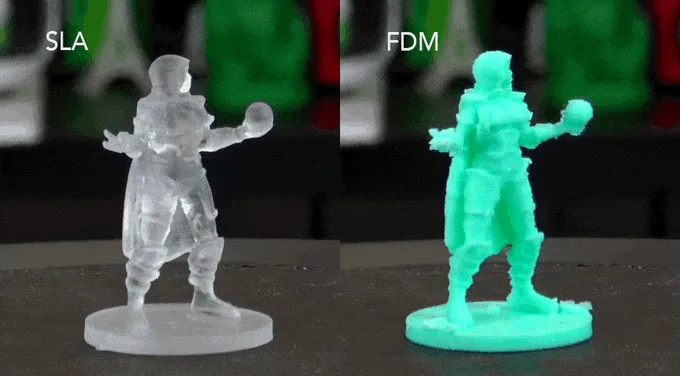
Gillette's Razor Maker™ gives consumers the power to create and order customized 3D printed razor handles, with the choice of 48 different designs (and counting), a variety of colors, and the option to add custom text.
3D printing can create complex shapes and parts, such as overhangs, microchannels, and organic shapes, that would be costly or even impossible to produce with traditional manufacturing methods. This provides the opportunity to consolidate assemblies into less individual parts to reduce weight, alleviate weak joints, and cut down on assembly time, unleashing new possibilities for design and engineering.
Nervous System launched the first-ever 3D printed ceramic jewelry line, consisting of intricate designs that would be impossible to manufacture using any other ceramic technique.
Product development is an iterative process that requires multiple rounds of testing, evaluation, and refinement. Finding and fixing design flaws early can help companies avoid costly revisions and tooling changes down the road.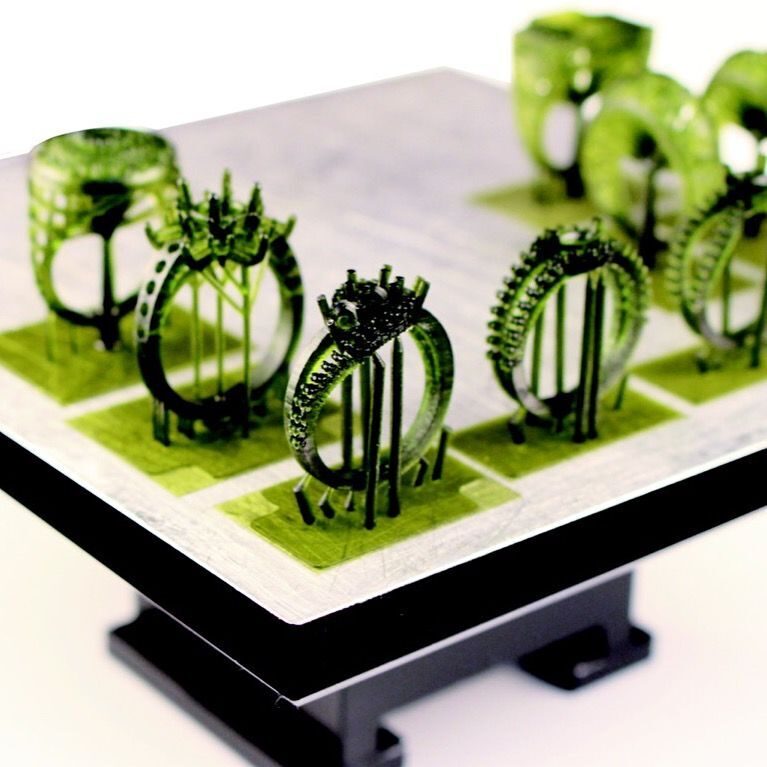 With 3D printing, engineers can thoroughly test prototypes that look and perform like final products, reducing the risks of usability and manufacturability issues before moving into production.
With 3D printing, engineers can thoroughly test prototypes that look and perform like final products, reducing the risks of usability and manufacturability issues before moving into production.
The developers of Plaato, an optically clear airlock for homebrewing, 3D printed 1,000 prototypes to fine tune their design before investing in expensive tooling.
3D printing accelerates innovation and supports businesses across a wide range of industries, including engineering, manufacturing, dentistry, healthcare, education, entertainment, jewelry, audiology, and more.
Rapid prototyping with 3D printing empowers engineers and product designers to turn ideas into realistic proofs of concept, advance these concepts to high-fidelity prototypes that look and work like final products, and guide products through a series of validation stages toward mass production.
Applications:
- Rapid prototyping
- Communication models
- Manufacturing validation
Learn More
Manufacturers automate production processes and streamline workflows by prototyping tooling and directly 3D printing custom tools, molds, and manufacturing aids at far lower costs and lead times than with traditional manufacturing. This reduces manufacturing costs and defects, increases quality, speeds up assembly, and maximizes labor effectiveness.
This reduces manufacturing costs and defects, increases quality, speeds up assembly, and maximizes labor effectiveness.
Applications:
- Jig and fixtures
- Tooling
- Molding (injection molding, thermoforming, silicone molding, overmolding)
- Metal casting
- Short run production
- Mass customization
Learn More
3D printers are multifunctional tools for immersive learning and advanced research. They can encourage creativity and expose students to professional-level technology while supporting STEAM curricula across science, engineering, art, and design.
Applications:
- Models for STEAM curricula
- Fab labs and makerspaces
- Custom research setups
Learn More
Affordable, professional-grade desktop 3D printing helps doctors deliver treatments and devices customized to better serve each unique individual, opening the door to high-impact medical applications while saving organizations significant time and costs from the lab to the operating room.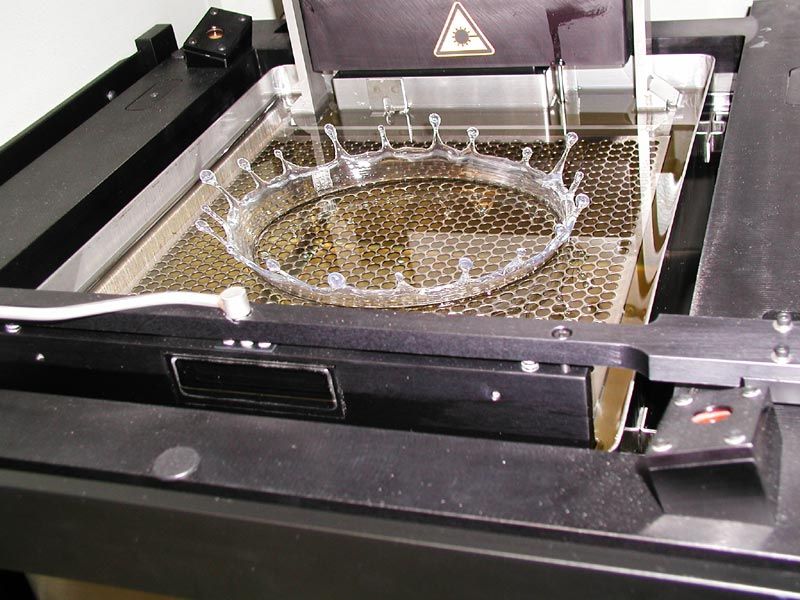
Applications:
- Anatomical models for surgical planning
- Medical devices and surgical instruments
- Insoles and orthotics
Learn More
High definition physical models are widely used in sculpting, character modeling, and prop making. 3D printed parts have starred in stop-motion films, video games, bespoke costumes, and even special effects for blockbuster movies.
Applications:
- Hyper-realistic sculptures
- Character models
- Props
Learn More
Jewelry professionals use CAD and 3D printing to rapidly prototype designs, fit clients, and produce large batches of ready-to-cast pieces. Digital tools allow for the creation of consistent, sharply detailed pieces without the tediousness and variability of wax carving.
Applications:
- Lost-wax casting (investment casting)
- Fitting pieces
- Master patterns for rubber molding
Learn More
Hearing specialists and ear mold labs use digital workflows and 3D printing to manufacture higher quality custom ear products more consistently, and at higher volumes for applications like behind-the-ear hearing aids, hearing protection, and custom earplugs and earbuds.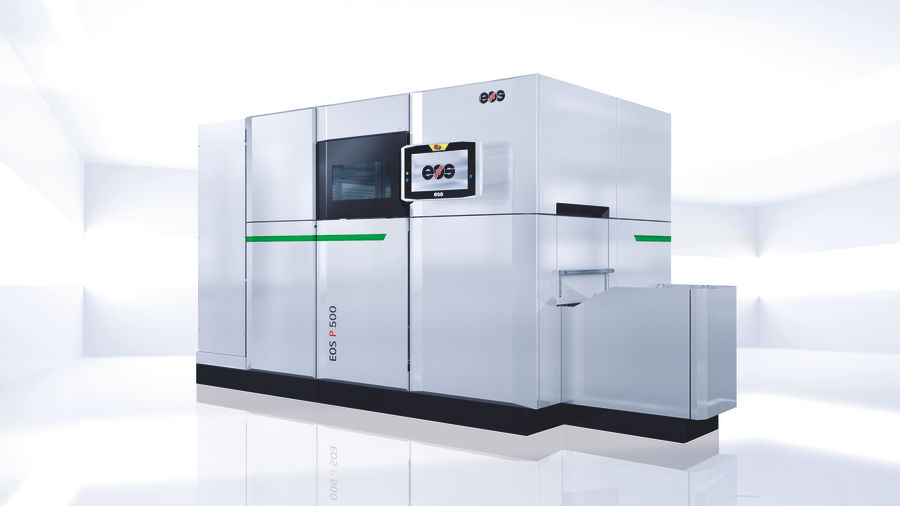
Applications:
- Soft silicone ear molds
- Custom earbuds
Learn More
The market for 3D printing materials is wide and ever-growing, with printers for everything from plastics to metals, and even food and live tissue in development. Formlabs offers the following range of photopolymer materials for the desktop.
Standard 3D printing materials provide high resolution, fine features, and a smooth surface finish ideal for rapid prototyping, product development, and general modeling applications.
These materials are available in Black, White, and Grey with a matte finish and opaque appearance, Clear for any parts requiring translucency, and as a Color Kit to match almost any custom color.
Explore Standard Materials
3D printing materials for engineering, manufacturing, and product design are formulated to provide advanced functionality, withstand extensive testing, perform under stress, and remain stable over time.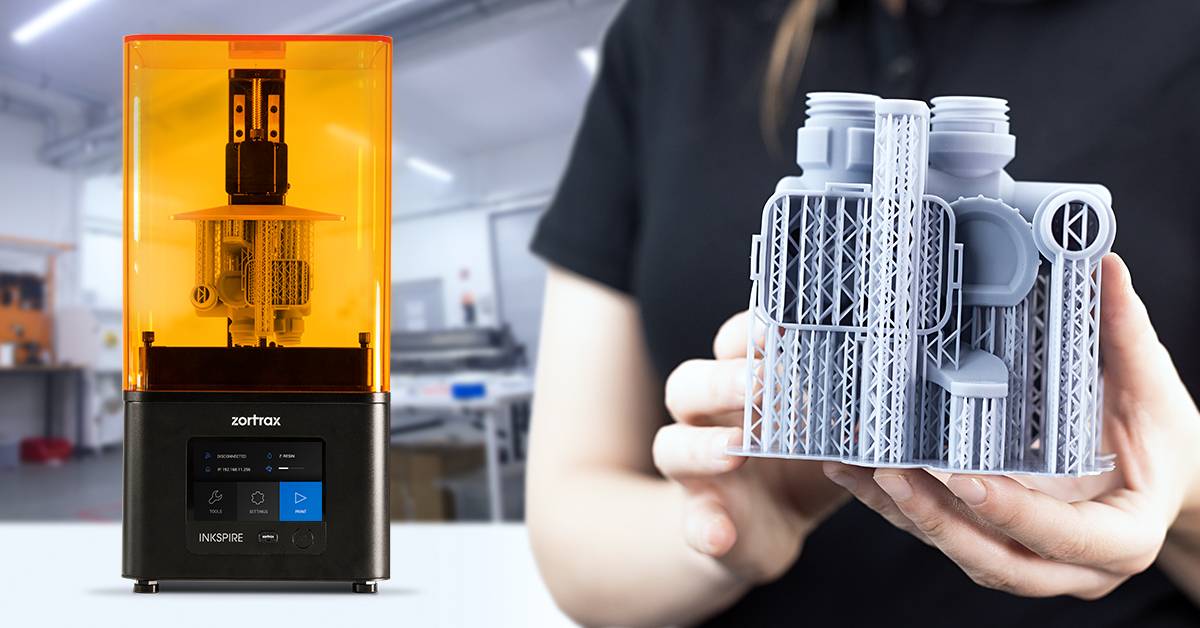
Engineering materials are ideal for 3D printing strong, precise concept models and prototypes to rapidly iterating through designs, assess form and fit, and optimize manufacturing processes.
Explore Engineering Materials
Medical resins empower hospitals to create patient-specific parts in a day at the point of care and support R&D for medical devices. These resins are formulated for 3D printing anatomical models, medical device and device components, and surgical planning and implant sizing tools.
Explore Jewelry Materials
Jewelry resins are formulated to capture breathtaking detail and create custom jewelry cost-effectively. These resins are ideal for jewelry prototyping and casting jewelry, as well as vulcanized rubber and RTV molding.
Explore Jewelry Materials
Specialty Resins push the limits of 3D printing, featuring advanced materials with unique mechanical properties that expand what’s possible with in-house fabrication on our stereolithography 3D printers.
Explore Specialty Materials
In recent years, high-resolution industrial 3D printers have become more affordable, intuitive, and reliable. As a result, the technology is now accessible to more businesses. Read our in-depth guide about 3D printer costs, or try our interactive tool to see if this technology makes economic sense your business.
Calculate Your Savings
New to 3D printing? Explore our guides to learn about the key terms and specific characteristics of 3D printing to find the best solution for your business.
For further questions,
Explore 3D Printing Resources
Top 5 Resin 3D Printers (2021 Review)
Resin 3D printer produces highly reliable prints using SLA, LCD or DLP technology. It cures UV resin and turns liquid into high quality 3D models at a faster rate.
To go into more detail, stereolithography (SLA) is the earliest form of resin 3D printing, which works by adding a light sensitive liquid resin substrate to a UV laser beam.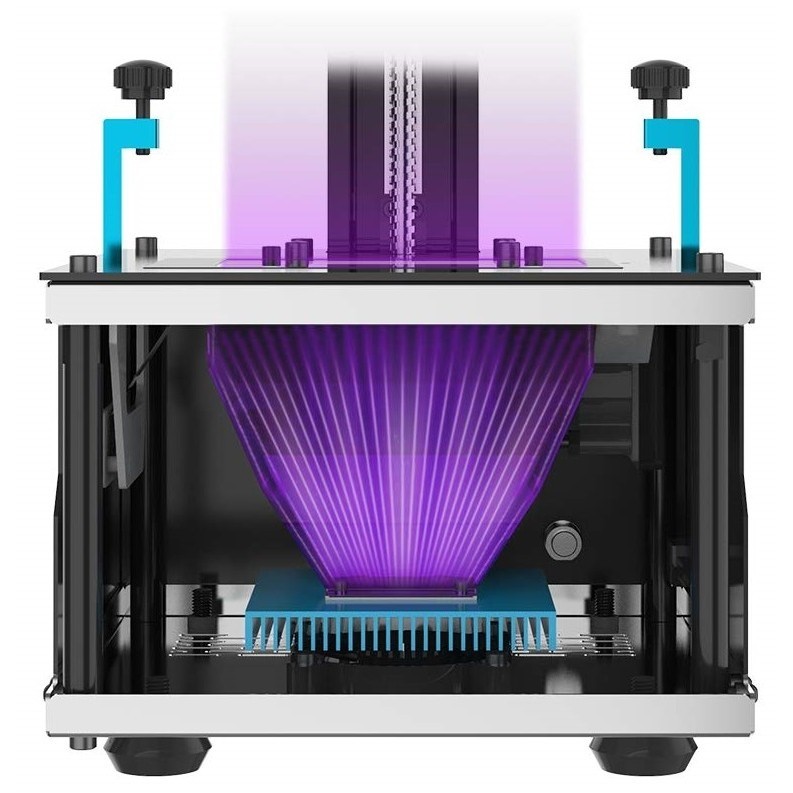 The resin is then cured to the desired pattern and the product is formed layer by layer to completion.
The resin is then cured to the desired pattern and the product is formed layer by layer to completion.
On the other hand, when we talk about digital light processing (DLP), we mean the process of projecting one image in each layer with a digital projector by emitting UV radiation. And with the advent of LCD technology, resin 3D printing with LCD screen is becoming predominant in the 3D printing industry today. Since the LCD screen acts as a mask over the UV light source, it is sometimes referred to as MSLA (masked stereolithography).
Having said that, getting the right resin 3D printer has never been easier with so many brands and models available on the market. So, to help you on your buying journey, we've provided the top five resin 3D printers, along with advice from our technical experts and 3D printer enthusiasts, to give you the most important information before you buy.
Just click the buttons below that we have prepared for you to view their best deals on Amazon. That being said, we hope you find the best resin 3D printer to suit your next printing project in the future!
That being said, we hope you find the best resin 3D printer to suit your next printing project in the future!
The best polymer 3D printers in comparison and rating
| Smol 3D printers | Features | 1. 3D-PHOMOV |
| |
|
Quality and accuracy
Functions
Ease in use
Plus :
- It has a large assembly of 192 mm x 120 mm X 24 mm, that allows us to maximize our creativity and imagination.
- Offers an 8.9-inch 4K monochrome LCD display with a resolution of 3840 x 2400 pixels, which can return print information to its original form, and has a lifespan of up to 2000 hours.

- Has a short exposure time of 1.5-2 seconds and delivers a high print speed of 60mm per hour, which is 3 times faster than a standard 3D printer.
- Features a dual effect cooling system specially designed for consistent print performance and longevity.
- Uses a UV LED matrix to distribute light more evenly throughout the print.
- Comes with a dual Z-axis that prevents Z-axis wobble and improves printing efficiency.
- Has Wi-Fi connectivity for remote monitoring of print operations.
Cons:
- The firmware is unstable, but this can be fixed by updating it.
- Vapors seem very smelly, so a more well ventilated print shop is required.
Final take:
This ANYCUBIC Photon Mono X resin 3D printer revolutionized resin 3D printing. It impressed us during the testing process as it printed consistently at 3 x 192 x 120 mm. It has a monochrome LCD in the center as well as a 245K resolution panel with 4 micron pixel size (XY). We printed with a thickness of 50mm and were impressed by the quality of the print, which perfectly brings out important and small details. The slicer program is simple but accurate. So far, the auto support feature has been reliable because we haven't had missed or failed prints due to insufficient support. The Z-axis is indeed a thread-height bar, while the plastic tank is anodized aluminum, so we've never experienced any Z-axis wobble before this entry. It also features a brushed aluminum platform that improves the adhesion between the platform and prints, as well as its design and durability. Ultimately, this ANYCUBIC Photon Mono X 05D Resin Printer is an excellent entry-level resin UV printer with exceptional print efficiency. We were blown away by its printing capabilities and we can't say enough about the print quality!
It impressed us during the testing process as it printed consistently at 3 x 192 x 120 mm. It has a monochrome LCD in the center as well as a 245K resolution panel with 4 micron pixel size (XY). We printed with a thickness of 50mm and were impressed by the quality of the print, which perfectly brings out important and small details. The slicer program is simple but accurate. So far, the auto support feature has been reliable because we haven't had missed or failed prints due to insufficient support. The Z-axis is indeed a thread-height bar, while the plastic tank is anodized aluminum, so we've never experienced any Z-axis wobble before this entry. It also features a brushed aluminum platform that improves the adhesion between the platform and prints, as well as its design and durability. Ultimately, this ANYCUBIC Photon Mono X 05D Resin Printer is an excellent entry-level resin UV printer with exceptional print efficiency. We were blown away by its printing capabilities and we can't say enough about the print quality!
30-50 mm per hour
SLISER software
Chitaboks
Equal for use
Simplication in use
simplicity in the use Pros of :
- Features a COB UV LED light source that emits more stable UV light, and a 2K monochrome LCD display, which greatly improves printing performance and accuracy.
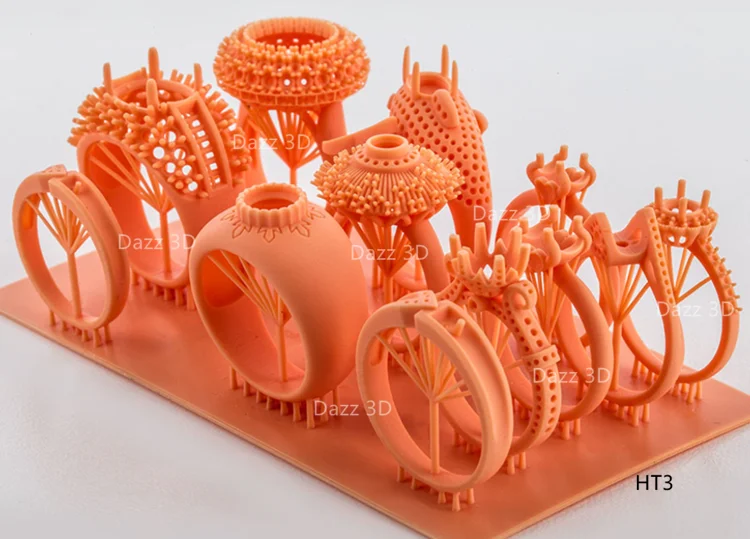
- Comes with a 6.08-inch 2K HD monochrome LCD, which has a much longer life and high stability in long-term printing.
- It only takes 2 seconds to apply cured resin to one layer, which can greatly improve print quality.
- Features a durable CNC machined aluminum body and its state of the art sandblasted build plate also has excellent adhesion throughout the print for more reliable printing.
- Supports 12 different languages, allowing customers from all over the world to easily use this 3D printer. (Japanese, Dutch, Korean, French, German, Russian, Italian, Spanish, Turkish and Portuguese).
- Offers a replacement resin tank made from a special engineering plastic that is environmentally friendly and biodegradable.
Cons:
- The slicer app is a little hard to use.
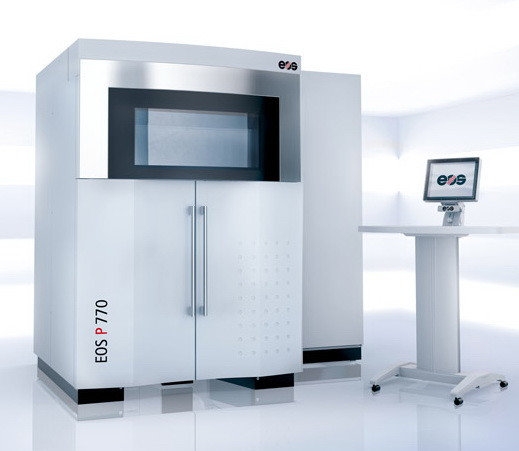
Final take:
The ELEGOO Mars 3 Mono MSLA 2D printer is among the most affordable 3D printers we have seen so far. It features a monochrome LCD, COB UV light source and a 6.08-inch 2K HD LCD. We printed everything from industrial parts to board game mini-games with a build volume of 129mm x 80mm x 150mm. Compared to RGB LCD 3D printers, it has four times the shelf life and twice the print speed, making it one of the most powerful, reliable and maintenance free resin 3D printers. In the process of testing the transparent resin, we set at least 8 seconds per layer at a height of 0.05 mm, and it showed outstanding consistency. Also, at 11-12 seconds for opaque resins per 0.05mm layer, the prints from this 3D printer are really beautiful and flawless. We had a great time with this ELEGOO Mars 3 Mono MSLA 2D Printer as it is incredibly easy to operate while in use and comes with amazing support. In addition, it creates amazing objects with stunning detail and resolution.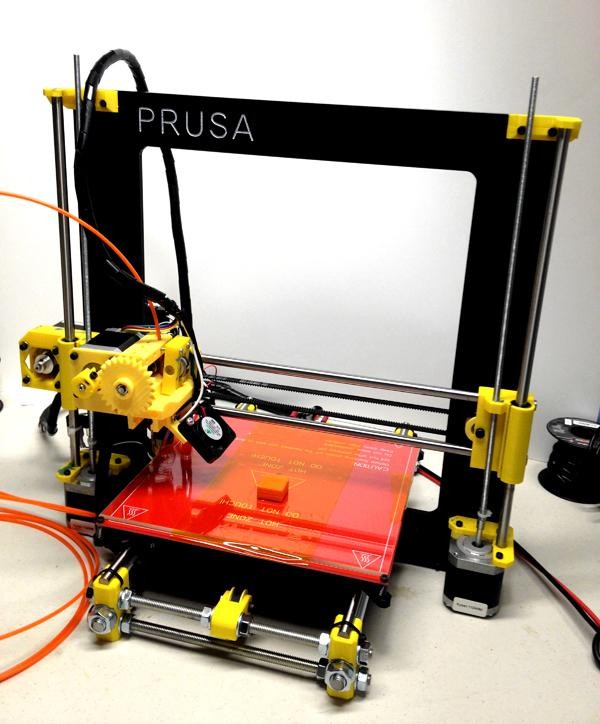
30 mm/h
Slicer software
Longer in-house developed slicing software. CHITUBOX4
Quality and accuracy of
Functions
Simplication in use
Plus :
- also supported an increetized LCD-3D prisoner with a faster. and finer details compared to FDM printers.
- Comes with an advanced UV LED module that provides specialized optical path configuration and even power distribution to help improve prototype accuracy and print performance.
- Has a self-developed slicing program that creates a 100 MB slicing file in one minute, which is three times faster than others.

- Features 24 parallel LEDs for improved print efficiency, cure speed, layer adhesion support, and consistent light output compared to other printers.
- Features a full color touch screen interface, real-time display and monitoring of print status, fast bed leveling, strong steel body, strong adhesion, and a temperature warning system for greater safety.
Cons:
- We are a little limited in the printing area because it is a little small.
Final take:
This Longer Orange 3 Resin SLA 10D printer is one of the most iconic SLA 3D printers available and is a great entry level LCD light curing device. Assembly takes minimal time as we were able to start printing within minutes of unboxing and the entire process took only 15 minutes. The self-developed slicing program is incredibly easy to use and very fast. We printed 28mm high mock-ups which took about 3 hours to complete. One thing to note when printing with resin is that the printing process is proportional to the height of the model, meaning that it takes the same amount of time to print six models as it takes to print one model. It produces highly accurate prints and can print complex models such as miniatures including accessories. Ultimately, there is no doubt about its effectiveness, because it produces quality products of an exceptionally high level! This Longer Orange 3 Resin SLA 10D printer is a great buy when it comes to 3D printing.
We printed 28mm high mock-ups which took about 3 hours to complete. One thing to note when printing with resin is that the printing process is proportional to the height of the model, meaning that it takes the same amount of time to print six models as it takes to print one model. It produces highly accurate prints and can print complex models such as miniatures including accessories. Ultimately, there is no doubt about its effectiveness, because it produces quality products of an exceptionally high level! This Longer Orange 3 Resin SLA 10D printer is a great buy when it comes to 3D printing.
4C per layer (50-70 mm per hour)
SLISER software
CHITU CHITU DLP
FURTS INSIDE BUILDS AND COMMUNICATION BE value for money
Pros :
- Delivers exceptional accuracy and precision with 30W dynamic UV for fast printing, delivering 4 seconds per layer using a 2560 x 1440 2K HD masking LCD.

- Equipped with a dual fan air filtration system for impressive ventilation that uses activated carbon air filtration to effectively minimize odor differences.
- Uses the latest ChiTuBox slicing software for an exceptional user interface.
- Provides easy cleaning of the resin reservoir, plus a distinctive FEP release film reinforced at both ends.
- With a print volume of 119 mm x 65 mm x 160 mm, we can produce larger and larger prints one after the other.
- Has an integrated computer board that allows us to print directly from a USB stick.
- The body of the system is all-metal manufactured using CNC cutting technology, which improves the structural system, reduces friction and provides relatively smooth printing.
Cons:
- The manual is useless because there doesn't seem to be any cleaning or post-processing procedures, and even all the instructions are written in Chinese.
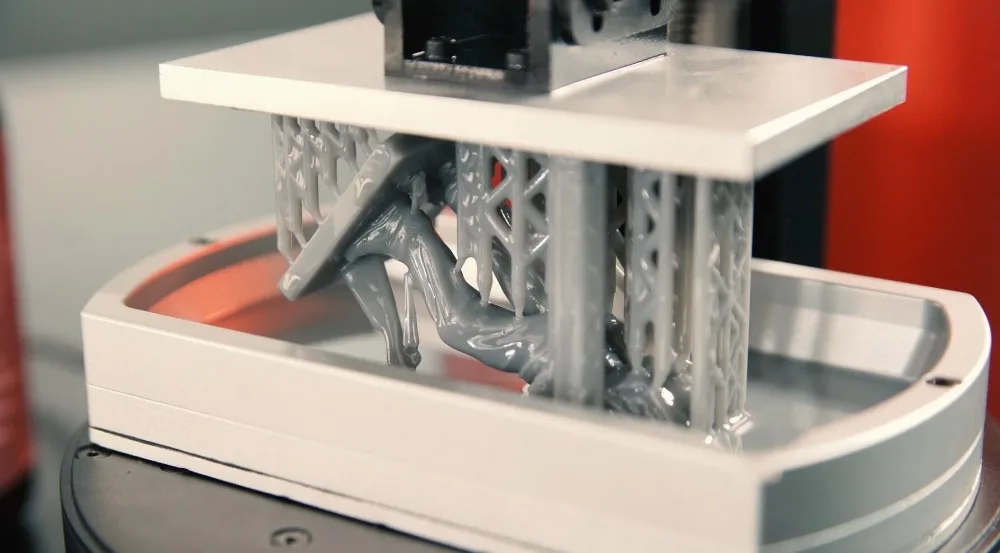
Final take:
Creality 3D printers are gaining popularity and this Creality LD3R Resin 002D printer is another great resin 3D printer in the industry. It is economical yet effective as its powerful UV output delivers 4 seconds per coat with exceptional precision and resolution. During the testing procedure, the initial calibration and setup is extremely easy and our first prints were pretty good. After weeks of continuous testing and use, we can confidently state that this 3D printer is a fantastic piece to get started with resin 3D printing. The resolution is really very good, and the surface quality of the printed parts is impressive. We have been using the printer for two months now, and since we have used it, it has not disappointed us. In addition, the performance of this 3D printer is amazing. Without a doubt, this Creality LD3R Resin 002D Printer is a fantastic way to start your 3D printing journey.
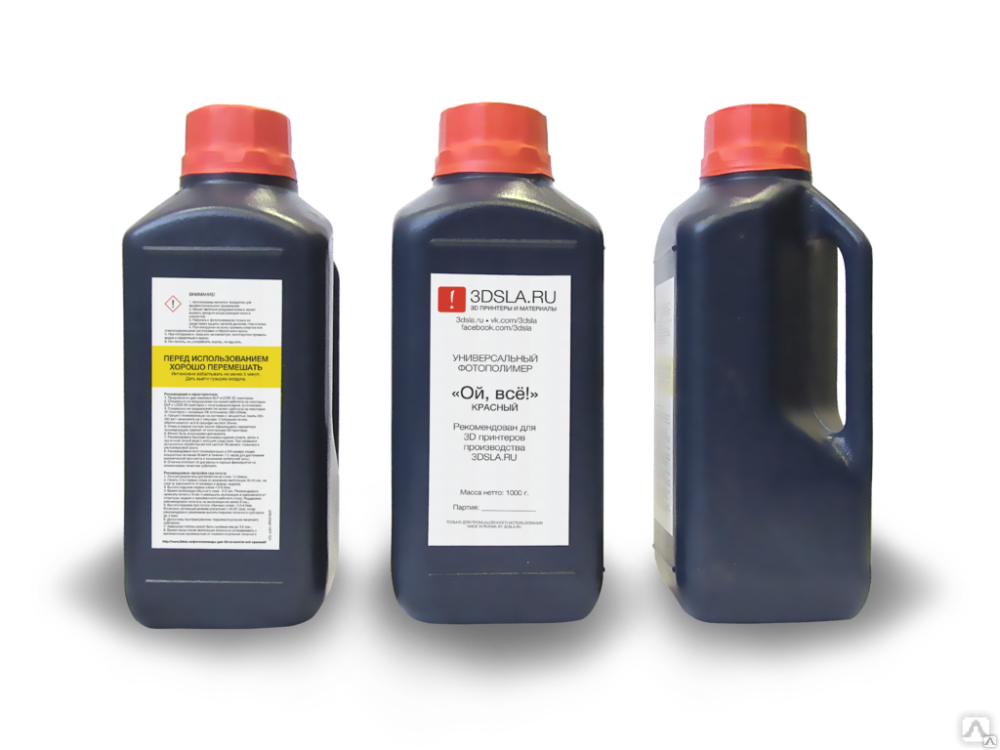
Cons:
- The work table is not tilted and holds a significant amount of resin.
- Compared to other 3D printers in the same price range, it usually has a smaller build volume.
Final take:
This PHROZEN Sonic Mini Resin 3D printer is an impressive low cost resin 3D printer with high speed printing, high precision and ease of use. It has a very advanced production and processing method that cures the resin in a fraction of a second. In the same way, it uses a thermally stable mono-LCD display, which will better last about 2000 hours, so we don't have to worry about maintenance and care. During testing, we tested this 3D printer with 0.03mm resolution accessories along with aqua green resin. The standard resin profile allowed only 2 seconds, but we accurately tested it for 1.35 seconds to achieve more accurate measurements and fewer filled loops. In addition, this resin 3D printer is so easy to operate that we can start printing in 5 minutes with just 3 clicks. We liked how the touchscreen feels responsive and the user interface looks attractive along with the lightweight body it has.
During testing, we tested this 3D printer with 0.03mm resolution accessories along with aqua green resin. The standard resin profile allowed only 2 seconds, but we accurately tested it for 1.35 seconds to achieve more accurate measurements and fewer filled loops. In addition, this resin 3D printer is so easy to operate that we can start printing in 5 minutes with just 3 clicks. We liked how the touchscreen feels responsive and the user interface looks attractive along with the lightweight body it has.
Top 5 Resin 3D Printers (2021 Review)
Resin 3D printer produces highly reliable prints using SLA, LCD or DLP technology. It cures UV resin and turns liquid into high quality 3D models at a faster rate.
To go into more detail, stereolithography (SLA) is the earliest form of resin 3D printing, which works by adding a light sensitive liquid resin substrate to a UV laser beam. The resin is then cured to the desired pattern and the product is formed layer by layer to completion.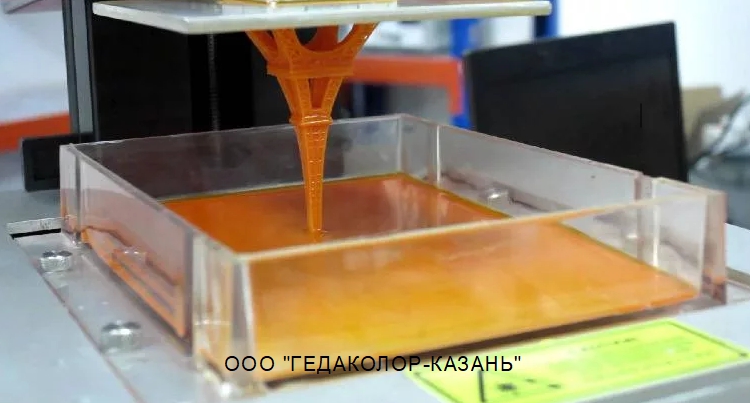
On the other hand, when we talk about digital light processing (DLP), we mean the process of projecting one image in each layer with a digital projector by emitting UV radiation. And with the advent of LCD technology, resin 3D printing with LCD screen is becoming predominant in the 3D printing industry today. Since the LCD screen acts as a mask over the UV light source, it is sometimes referred to as MSLA (masked stereolithography).
Having said that, getting the right resin 3D printer has never been easier with so many brands and models available on the market. So, to help you on your buying journey, we've provided the top five resin 3D printers, along with advice from our technical experts and 3D printer enthusiasts, to give you the most important information before you buy.
Just click the buttons below that we have prepared for you to view their best deals on Amazon. That being said, we hope you find the best resin 3D printer to suit your next printing project in the future!
The best polymer 3D printers in comparison and rating
| Smol 3D printers | Features | 1. |
| |
|
Quality and accuracy
Functions
Ease in use
Plus :
- It has a large assembly of 192 mm x 120 mm X 24 mm, that allows us to maximize our creativity and imagination.

- Offers an 8.9-inch 4K monochrome LCD display with a resolution of 3840 x 2400 pixels, which can return print information to its original form, and has a lifespan of up to 2000 hours.
- Has a short exposure time of 1.5-2 seconds and delivers a high print speed of 60mm per hour, which is 3 times faster than a standard 3D printer.
- Features a dual effect cooling system specially designed for consistent print performance and longevity.
- Uses a UV LED matrix to distribute light more evenly throughout the print.
- Comes with a dual Z-axis that prevents Z-axis wobble and improves printing efficiency.
- Has Wi-Fi connectivity for remote monitoring of print operations.
Cons:
- The firmware is unstable, but this can be fixed by updating it.
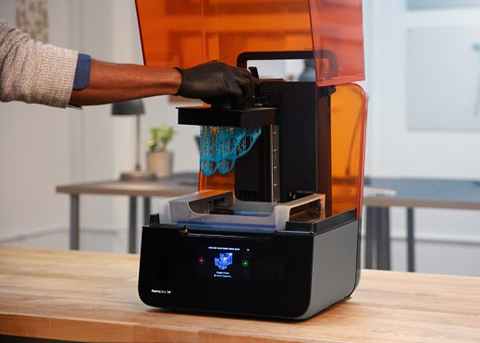
- Vapors seem very smelly, so a more well ventilated print shop is required.
Final take:
This ANYCUBIC Photon Mono X resin 3D printer revolutionized resin 3D printing. It impressed us during the testing process as it printed consistently at 3 x 192 x 120 mm. It has a monochrome LCD in the center as well as a 245K resolution panel with 4 micron pixel size (XY). We printed with a thickness of 50mm and were impressed by the quality of the print, which perfectly brings out important and small details. The slicer program is simple but accurate. So far, the auto support feature has been reliable because we haven't had missed or failed prints due to insufficient support. The Z-axis is indeed a thread-height bar, while the plastic tank is anodized aluminum, so we've never experienced any Z-axis wobble before this entry. It also features a brushed aluminum platform that improves the adhesion between the platform and prints, as well as its design and durability.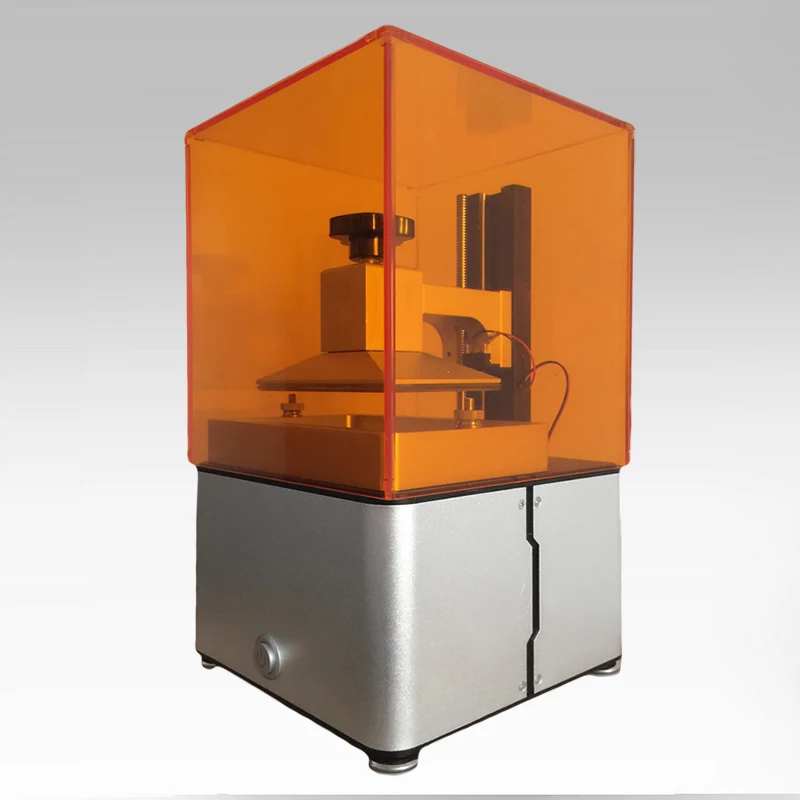 Ultimately, this ANYCUBIC Photon Mono X 05D Resin Printer is an excellent entry-level resin UV printer with exceptional print efficiency. We were blown away by its printing capabilities and we can't say enough about the print quality!
Ultimately, this ANYCUBIC Photon Mono X 05D Resin Printer is an excellent entry-level resin UV printer with exceptional print efficiency. We were blown away by its printing capabilities and we can't say enough about the print quality!
30-50 mm per hour
SLISER software
Chitaboks
Equal for use
Simplication in use
simplicity in the use Pros of :
- Features a COB UV LED light source that emits more stable UV light, and a 2K monochrome LCD display, which greatly improves printing performance and accuracy.
- Comes with a 6.08-inch 2K HD monochrome LCD, which has a much longer life and high stability in long-term printing.
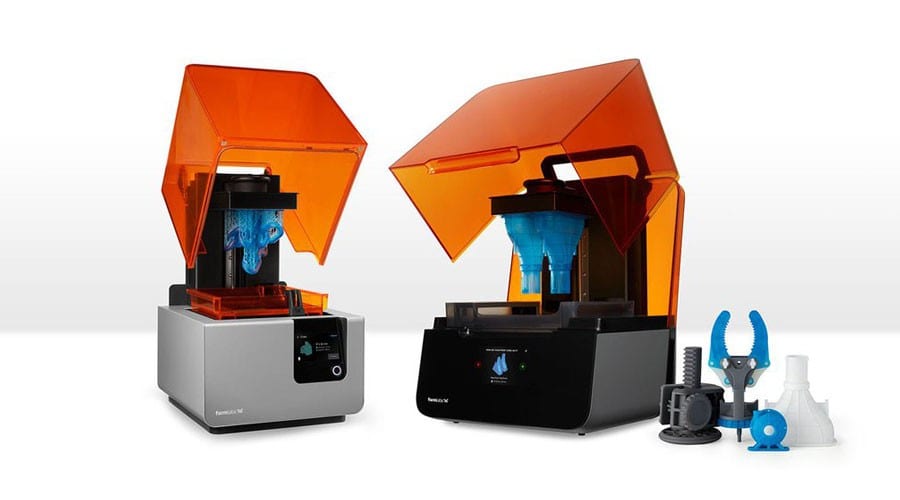
- It only takes 2 seconds to apply cured resin to one layer, which can greatly improve print quality.
- Features a durable CNC machined aluminum body and its state of the art sandblasted build plate also has excellent adhesion throughout the print for more reliable printing.
- Supports 12 different languages, allowing customers from all over the world to easily use this 3D printer. (Japanese, Dutch, Korean, French, German, Russian, Italian, Spanish, Turkish and Portuguese).
- Offers a replacement resin tank made from a special engineering plastic that is environmentally friendly and biodegradable.
Cons:
- The slicer app is a little hard to use.
Final take:
The ELEGOO Mars 3 Mono MSLA 2D printer is among the most affordable 3D printers we have seen so far. It features a monochrome LCD, COB UV light source and a 6.08-inch 2K HD LCD. We printed everything from industrial parts to board game mini-games with a build volume of 129mm x 80mm x 150mm. Compared to RGB LCD 3D printers, it has four times the shelf life and twice the print speed, making it one of the most powerful, reliable and maintenance free resin 3D printers. In the process of testing the transparent resin, we set at least 8 seconds per layer at a height of 0.05 mm, and it showed outstanding consistency. Also, at 11-12 seconds for opaque resins per 0.05mm layer, the prints from this 3D printer are really beautiful and flawless. We had a great time with this ELEGOO Mars 3 Mono MSLA 2D Printer as it is incredibly easy to operate while in use and comes with amazing support. In addition, it creates amazing objects with stunning detail and resolution.
It features a monochrome LCD, COB UV light source and a 6.08-inch 2K HD LCD. We printed everything from industrial parts to board game mini-games with a build volume of 129mm x 80mm x 150mm. Compared to RGB LCD 3D printers, it has four times the shelf life and twice the print speed, making it one of the most powerful, reliable and maintenance free resin 3D printers. In the process of testing the transparent resin, we set at least 8 seconds per layer at a height of 0.05 mm, and it showed outstanding consistency. Also, at 11-12 seconds for opaque resins per 0.05mm layer, the prints from this 3D printer are really beautiful and flawless. We had a great time with this ELEGOO Mars 3 Mono MSLA 2D Printer as it is incredibly easy to operate while in use and comes with amazing support. In addition, it creates amazing objects with stunning detail and resolution.
30 mm/h
Slicer software
Longer in-house developed slicing software. CHITUBOX4
CHITUBOX4
Quality and accuracy of
Functions
Simplication in use
Plus :
- also supported an increetized LCD-3D prisoner with a faster. and finer details compared to FDM printers.
- Comes with an advanced UV LED module that provides specialized optical path configuration and even power distribution to help improve prototype accuracy and print performance.
- Has a self-developed slicing program that creates a 100 MB slicing file in one minute, which is three times faster than others.
- Features 24 parallel LEDs for improved print efficiency, cure speed, layer adhesion support, and consistent light output compared to other printers.
- Features a full color touch screen interface, real-time display and monitoring of print status, fast bed leveling, strong steel body, strong adhesion, and a temperature warning system for greater safety.
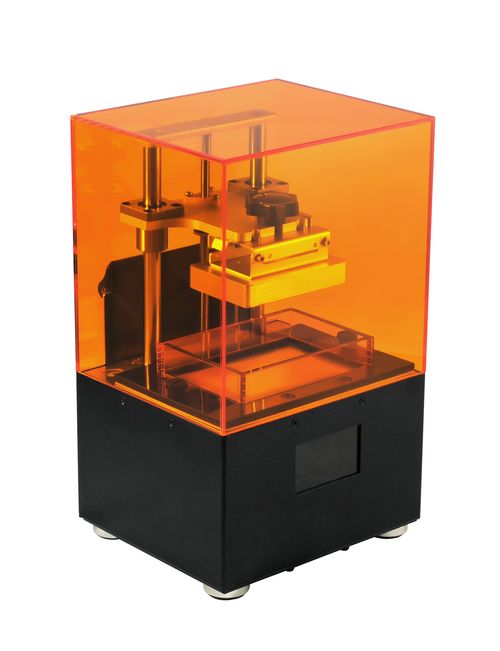
Cons:
- We are a little limited in the printing area because it is a little small.
Final take:
This Longer Orange 3 Resin SLA 10D printer is one of the most iconic SLA 3D printers available and is a great entry level LCD light curing device. Assembly takes minimal time as we were able to start printing within minutes of unboxing and the entire process took only 15 minutes. The self-developed slicing program is incredibly easy to use and very fast. We printed 28mm high mock-ups which took about 3 hours to complete. One thing to note when printing with resin is that the printing process is proportional to the height of the model, meaning that it takes the same amount of time to print six models as it takes to print one model. It produces highly accurate prints and can print complex models such as miniatures including accessories. Ultimately, there is no doubt about its effectiveness, because it produces quality products of an exceptionally high level! This Longer Orange 3 Resin SLA 10D printer is a great buy when it comes to 3D printing.
4C per layer (50-70 mm per hour)
SLISER software
CHITU CHITU DLP
FURTS INSIDE BUILDS AND COMMUNICATION BE value for money
Pros :
- Delivers exceptional accuracy and precision with 30W dynamic UV for fast printing, delivering 4 seconds per layer using a 2560 x 1440 2K HD masking LCD.
- Equipped with a dual fan air filtration system for impressive ventilation that uses activated carbon air filtration to effectively minimize odor differences.
- Uses the latest ChiTuBox slicing software for an exceptional user interface.
- Provides easy cleaning of the resin reservoir, plus a distinctive FEP release film reinforced at both ends.
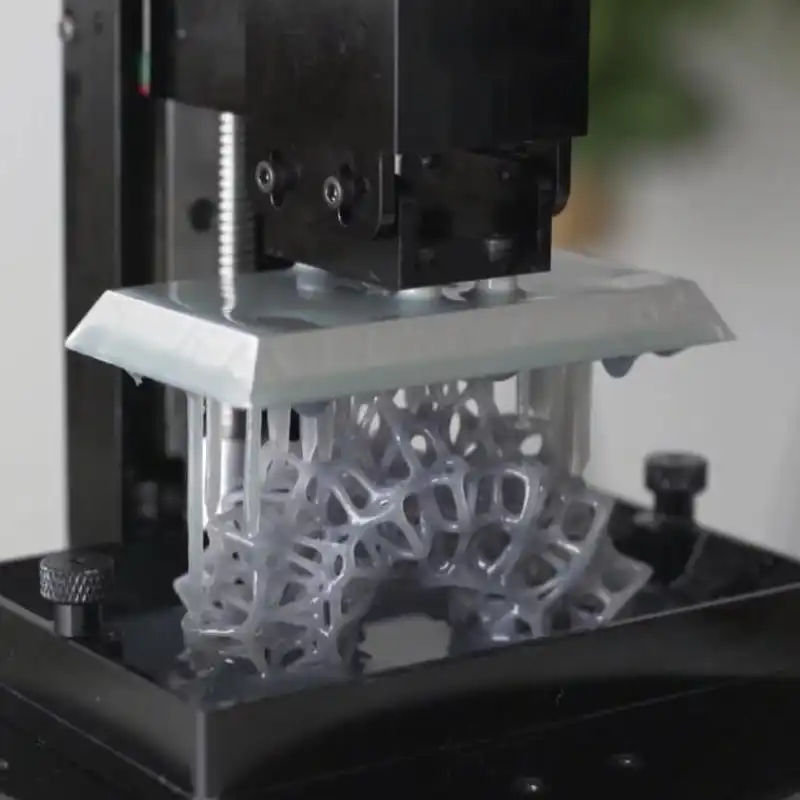
- With a print volume of 119 mm x 65 mm x 160 mm, we can produce larger and larger prints one after the other.
- Has an integrated computer board that allows us to print directly from a USB stick.
- The body of the system is all-metal manufactured using CNC cutting technology, which improves the structural system, reduces friction and provides relatively smooth printing.
Cons:
- The manual is useless because there doesn't seem to be any cleaning or post-processing procedures, and even all the instructions are written in Chinese.
Final take:
Creality 3D printers are gaining popularity and this Creality LD3R Resin 002D printer is another great resin 3D printer in the industry. It is economical yet effective as its powerful UV output delivers 4 seconds per coat with exceptional precision and resolution.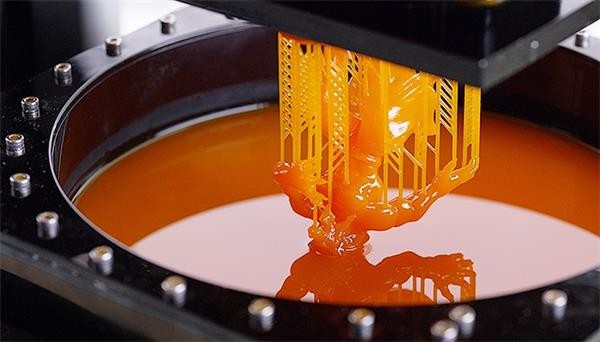 During the testing procedure, the initial calibration and setup is extremely easy and our first prints were pretty good. After weeks of continuous testing and use, we can confidently state that this 3D printer is a fantastic piece to get started with resin 3D printing. The resolution is really very good, and the surface quality of the printed parts is impressive. We have been using the printer for two months now, and since we have used it, it has not disappointed us. In addition, the performance of this 3D printer is amazing. Without a doubt, this Creality LD3R Resin 002D Printer is a fantastic way to start your 3D printing journey.
During the testing procedure, the initial calibration and setup is extremely easy and our first prints were pretty good. After weeks of continuous testing and use, we can confidently state that this 3D printer is a fantastic piece to get started with resin 3D printing. The resolution is really very good, and the surface quality of the printed parts is impressive. We have been using the printer for two months now, and since we have used it, it has not disappointed us. In addition, the performance of this 3D printer is amazing. Without a doubt, this Creality LD3R Resin 002D Printer is a fantastic way to start your 3D printing journey.

Cons:
- The work table is not tilted and holds a significant amount of resin.
- Compared to other 3D printers in the same price range, it usually has a smaller build volume.
Final take:
This PHROZEN Sonic Mini Resin 3D printer is an impressive low cost resin 3D printer with high speed printing, high precision and ease of use. It has a very advanced production and processing method that cures the resin in a fraction of a second. In the same way, it uses a thermally stable mono-LCD display, which will better last about 2000 hours, so we don't have to worry about maintenance and care. During testing, we tested this 3D printer with 0.03mm resolution accessories along with aqua green resin. The standard resin profile allowed only 2 seconds, but we accurately tested it for 1.


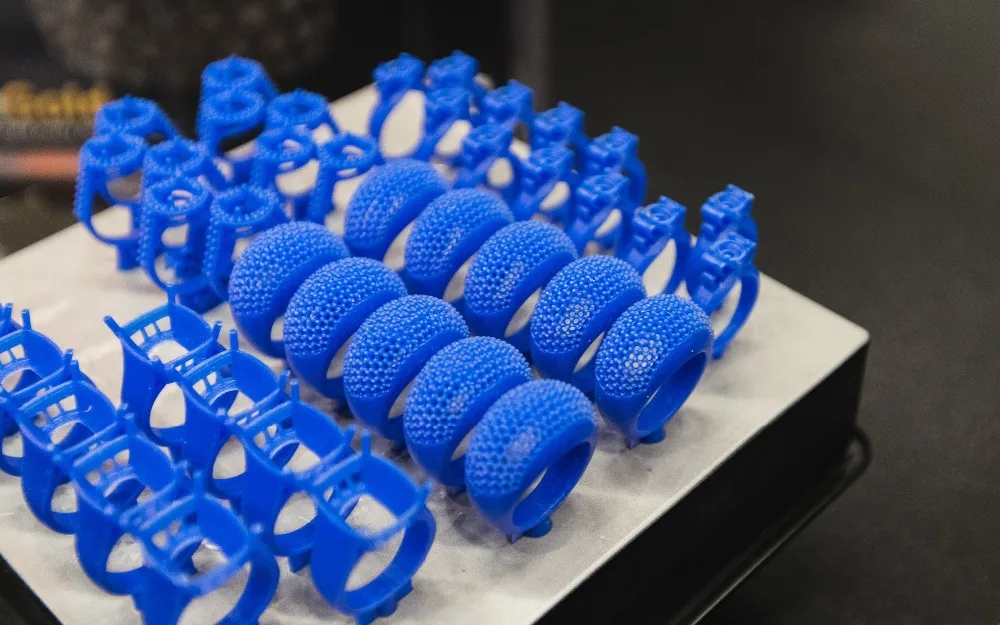 5-2 seconds
5-2 seconds  3D-PHOMOV
3D-PHOMOV 



